Almost 1000 nuclear tests took place there
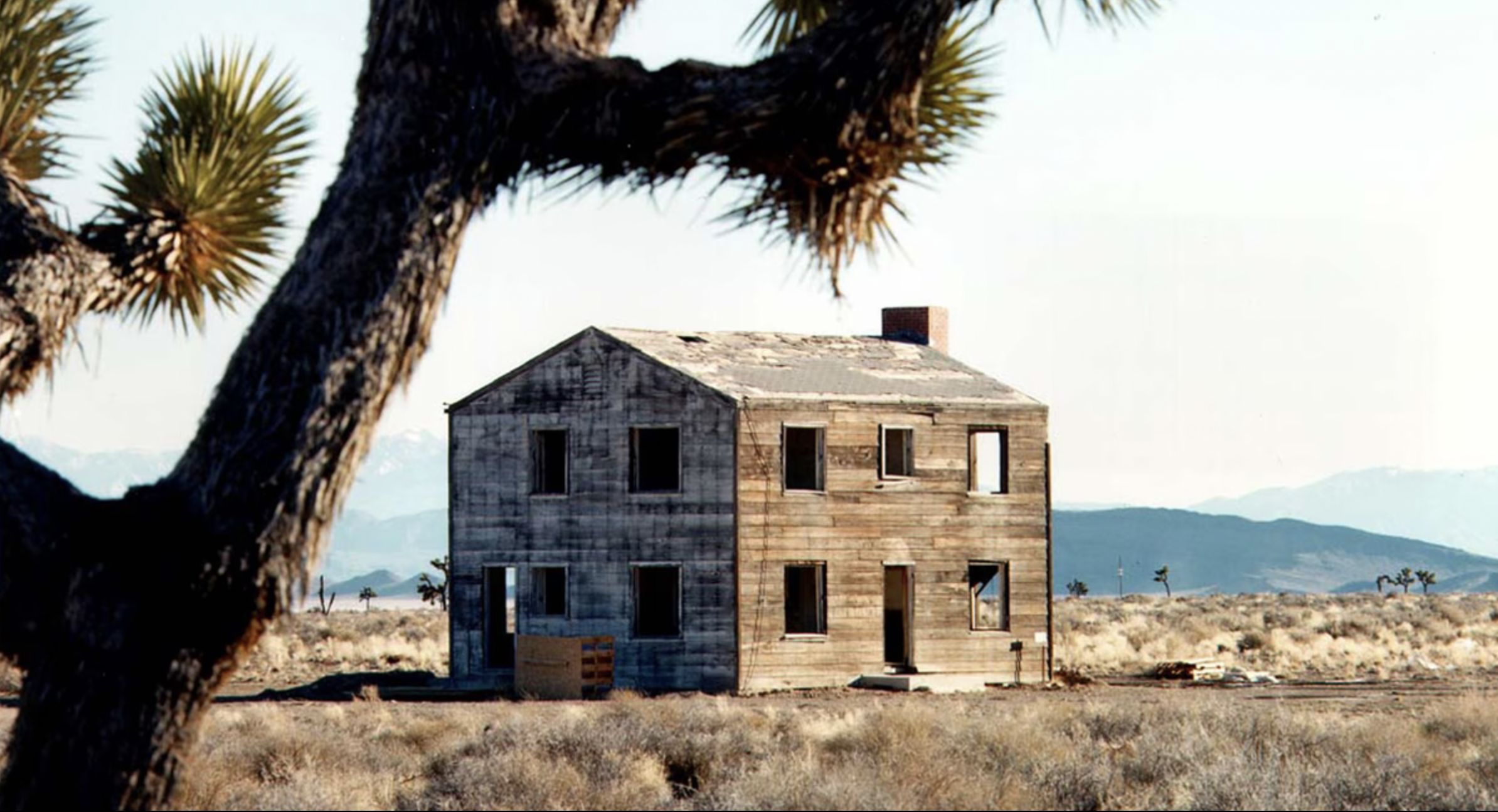
From 1951 to 1992, 928 nuclear tests occurred at the Nevada Test Site. While some of these explosions occurred on top of a 1500-foot-tall detonation tower to protect the monitoring equipment from being vapourised, over 800 were conducted underground to limit nuclear fallout and contain the damage. These tests marked the beginning of the so-called “Atomic Age”.
It led to the Miss Atomic beauty pageant
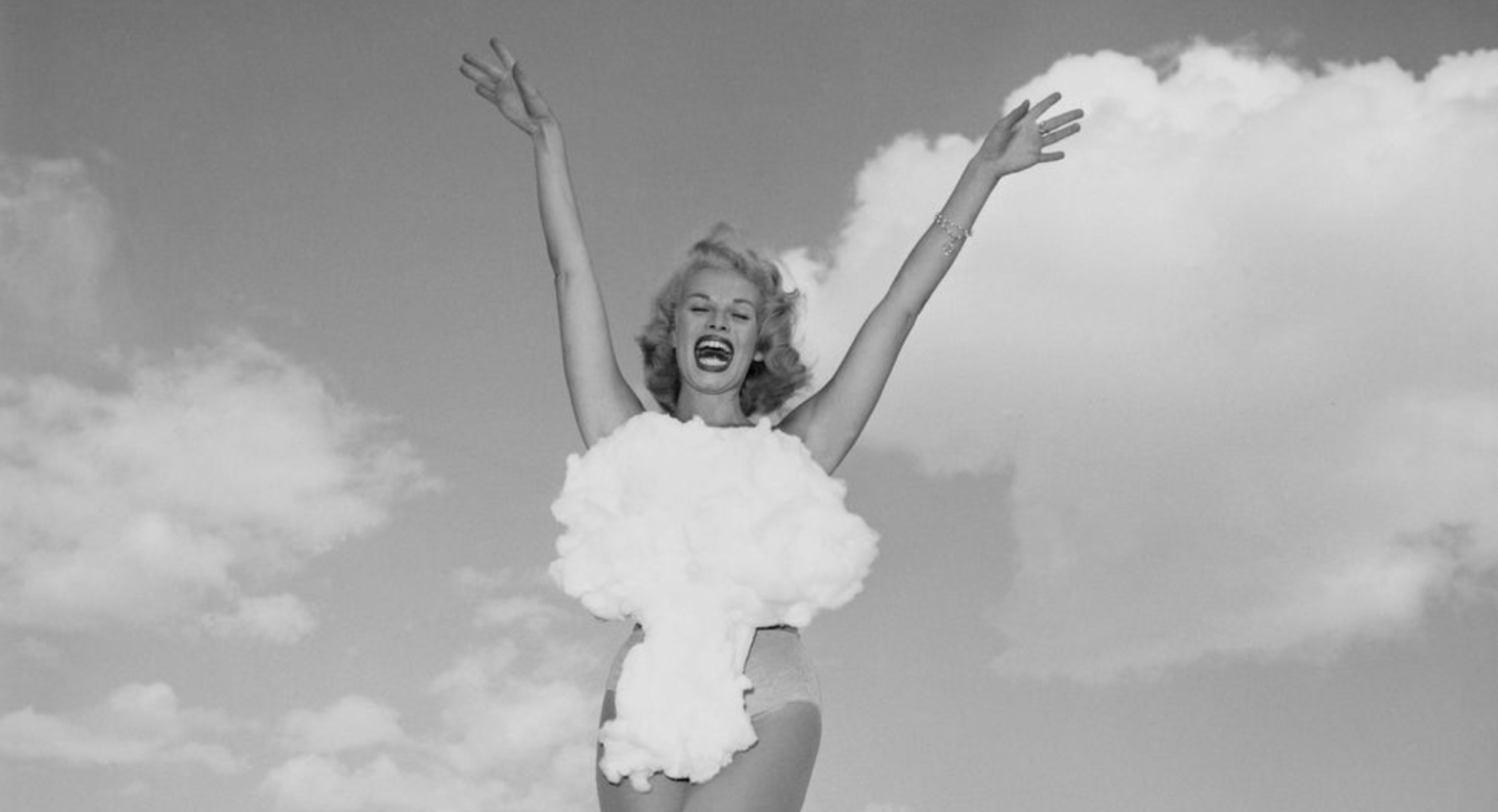
The American government took no pains to conceal the testing happening in Nevada, and so the frequent detonations were a source of national fascination. Nearby tourist hotspot Las Vegas capitalised on the novelty by crowning weapons-themed beauties: Miss Atomic Blast in 1952, Miss A-Bomb in 1953, and Miss Atomic Bomb in 1957. All three winners were professional Copa showgirls tasked with dazzling the stationed Marines.
The public held picnics at the test site
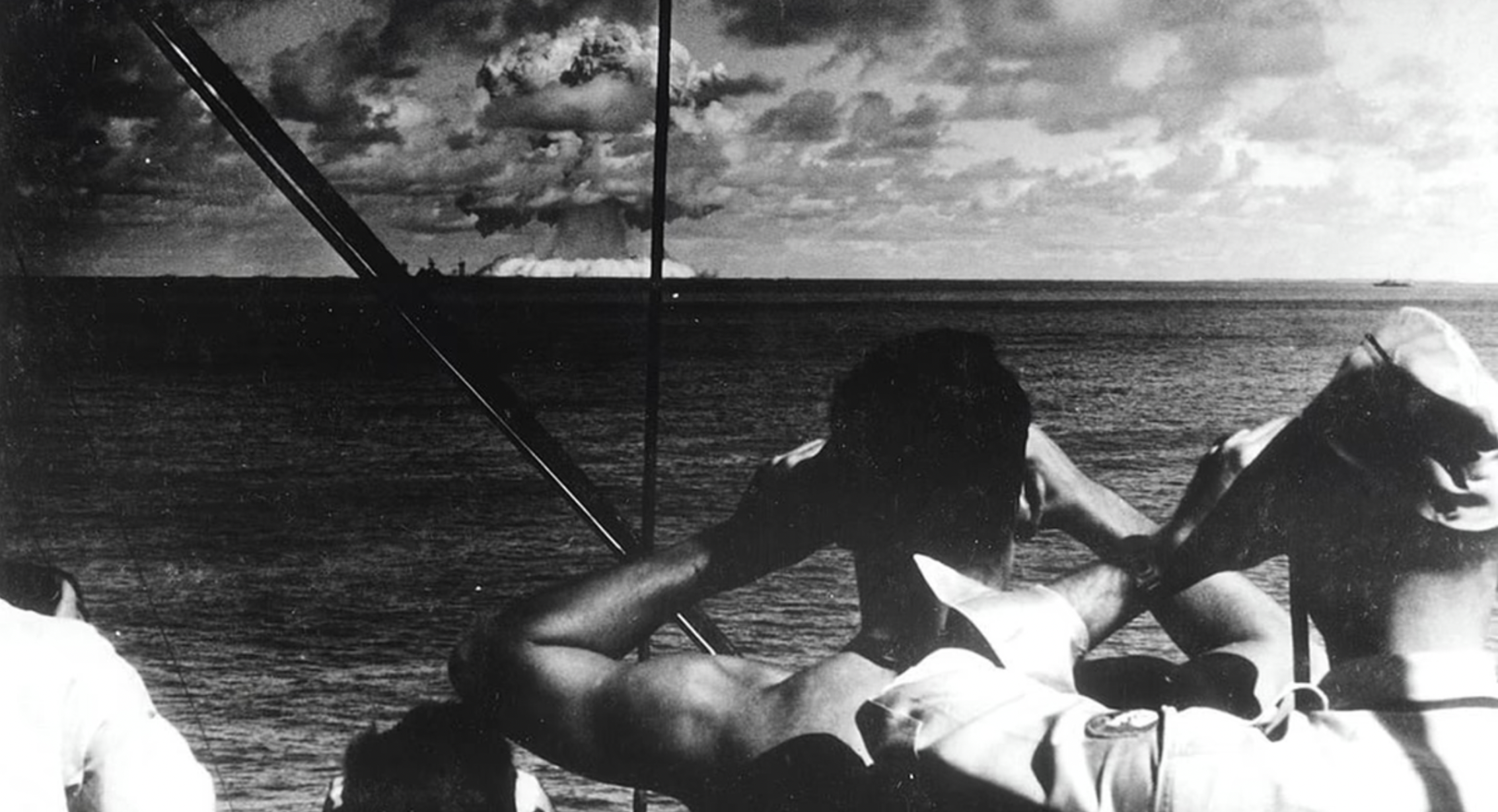
When nuclear testing began in earnest in 1952, not much was known about the dangers of prolonged exposure to radiation. As such, the public was encouraged to treat the regular detonations as a spectator sport. Many families in Las Vegas and Utah would journey to picnic close to the testing sites on weekends, in order to take in the spectacular visuals of the mushroom clouds.
It became a Vegas tourist attraction
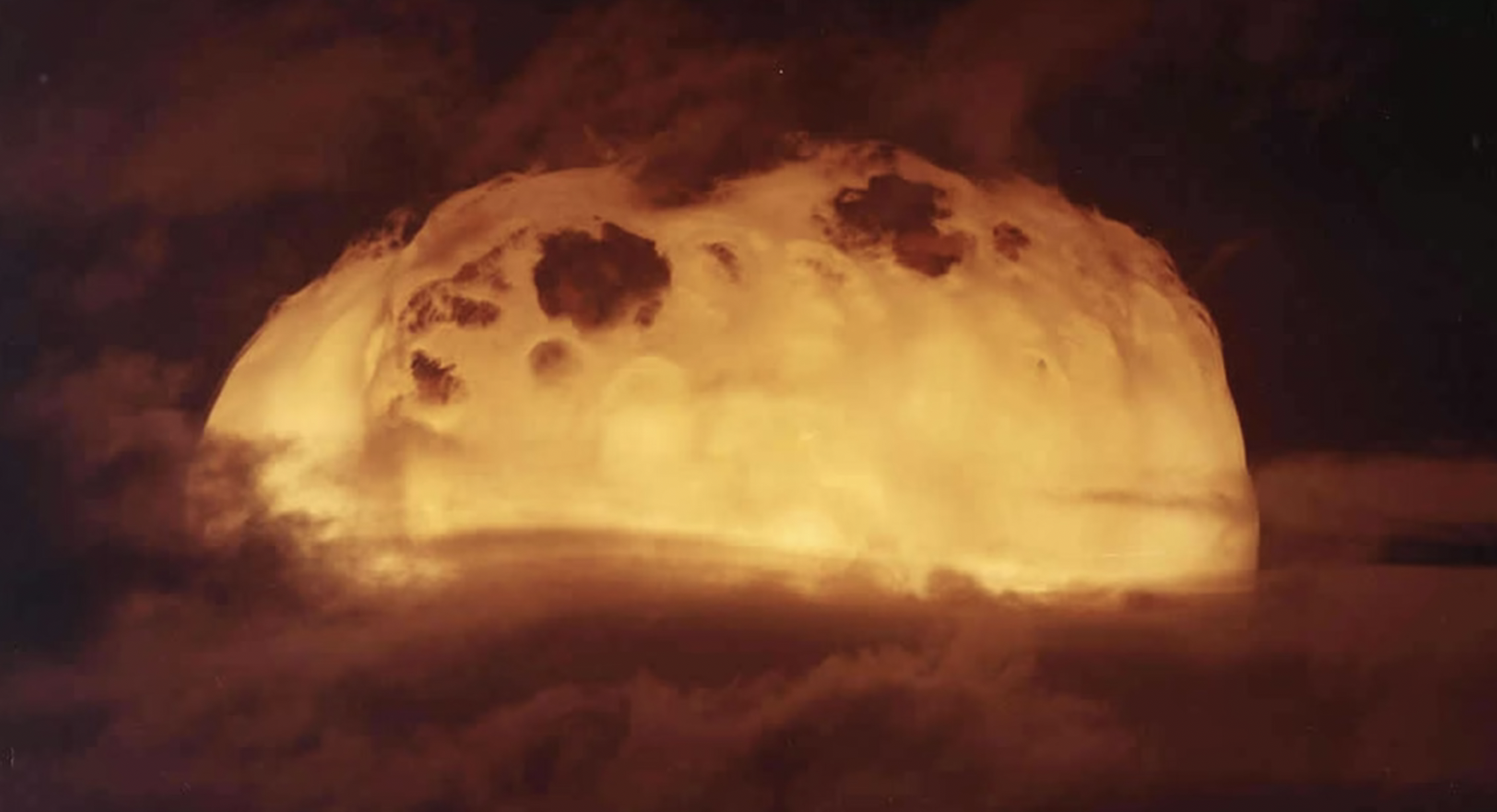
The crowning of beauty queens tasked with entertaining the military was not the only way Las Vegas capitalised on the Nevada Testing Site. To bolster American morale in the face of the Cold War, The Las Vegas Chamber of Commerce printed calendars listing detonation times and suggestions for the best viewing locations, which included the Sky Room at the luxurious Desert Inn Hotel and Casino.
The town was populated with mannequin “families”
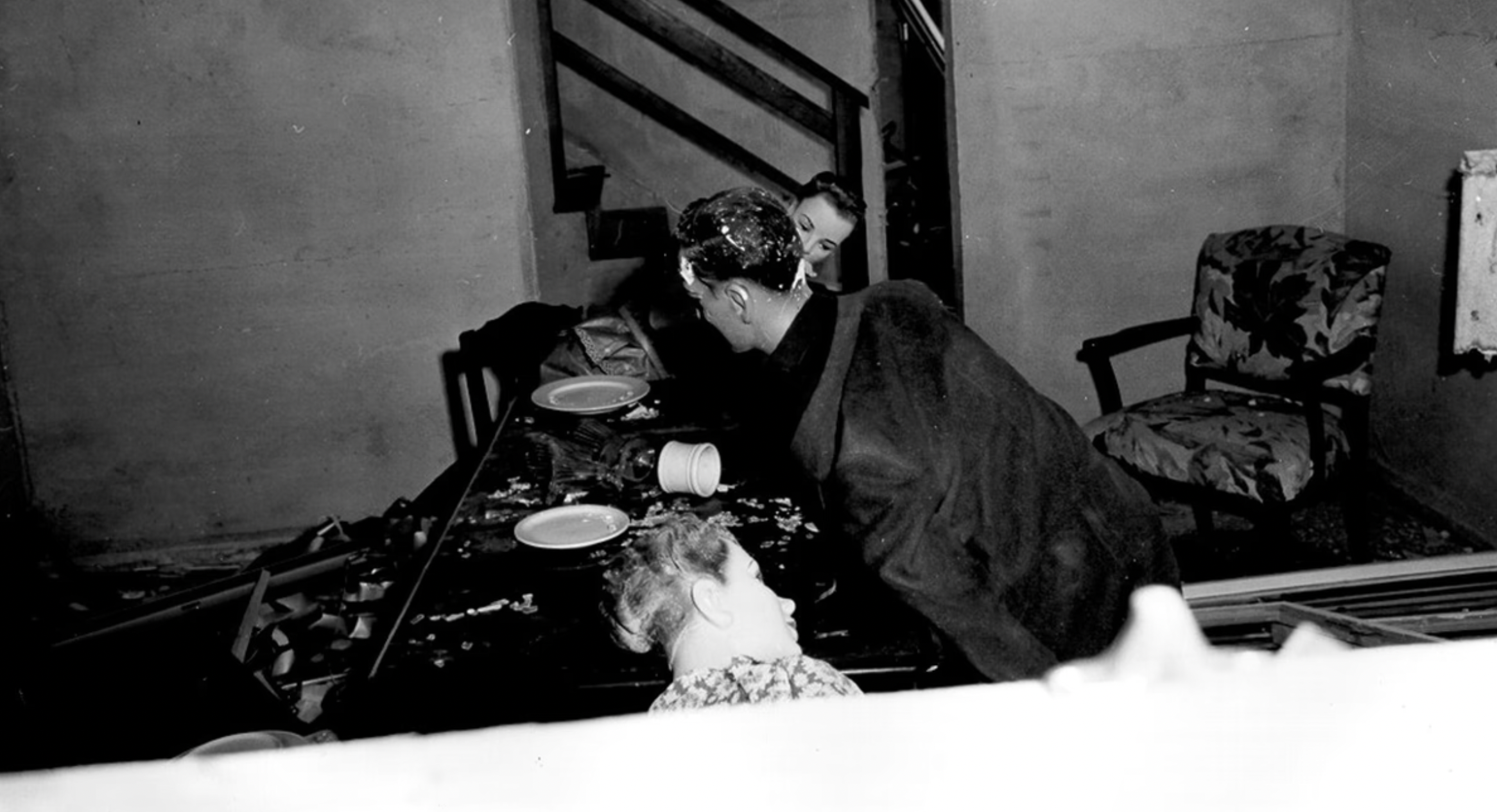
While the fanfare surrounding it was exuberant, the actual Nevada Test Site was a pretty ghoulish place. Constructed on the premises were “Doom towns”: fake villages with schools, churches and houses, all populated with mannequin families sitting at dining tables and watching TV. These constructions were designed to test the effects of various blast radiuses on civilians, in case of atomic bombs being dropped.
The tests showed the effects of blasts on different fabrics

One of the things the fake “Doom Towns” were designed to test was the impact of blasts on various fabrics and raw materials. In addition to constructing the homes alternately out of wood and bricks, the mannequin families were dressed in clothes made of different fabrics, to see which were the most protective. Buildings caught fire due to the blasts’ extreme heat, and the mannequins’ clothes were vapourised.
It may have led to the fastest man-made object on Earth
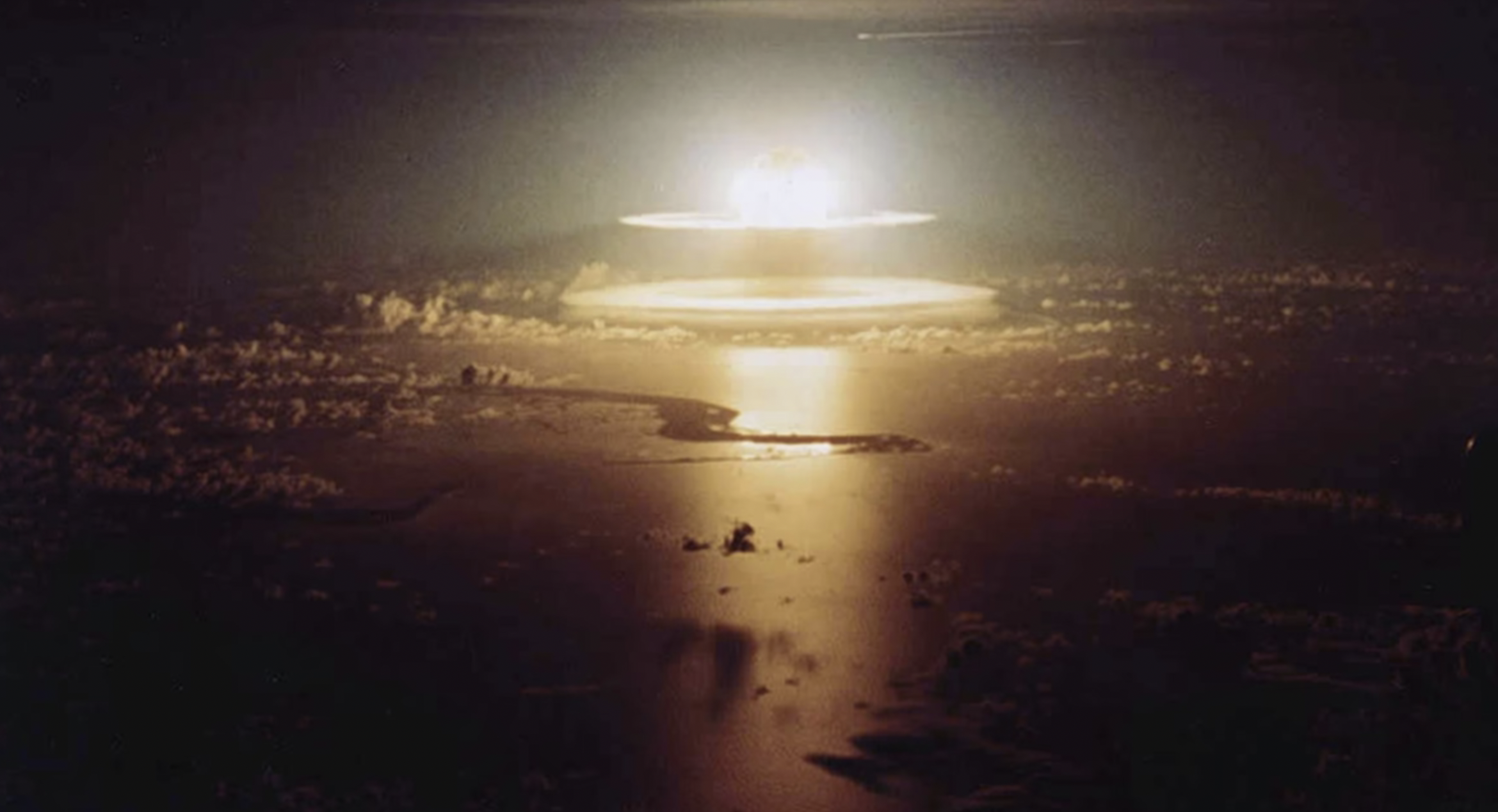
Though the scientists involved in the Nevada Testing Site made things as safe as they could, they couldn’t predict everything that would happen there. Most famously, an underground detonation was improperly vented, leading to a manhole cover being shot into the air by the full force of an atomic blast. It hit the upper atmosphere in less than 30 seconds and became the fastest manmade object on Earth.
One blast led to a 100-meter crater
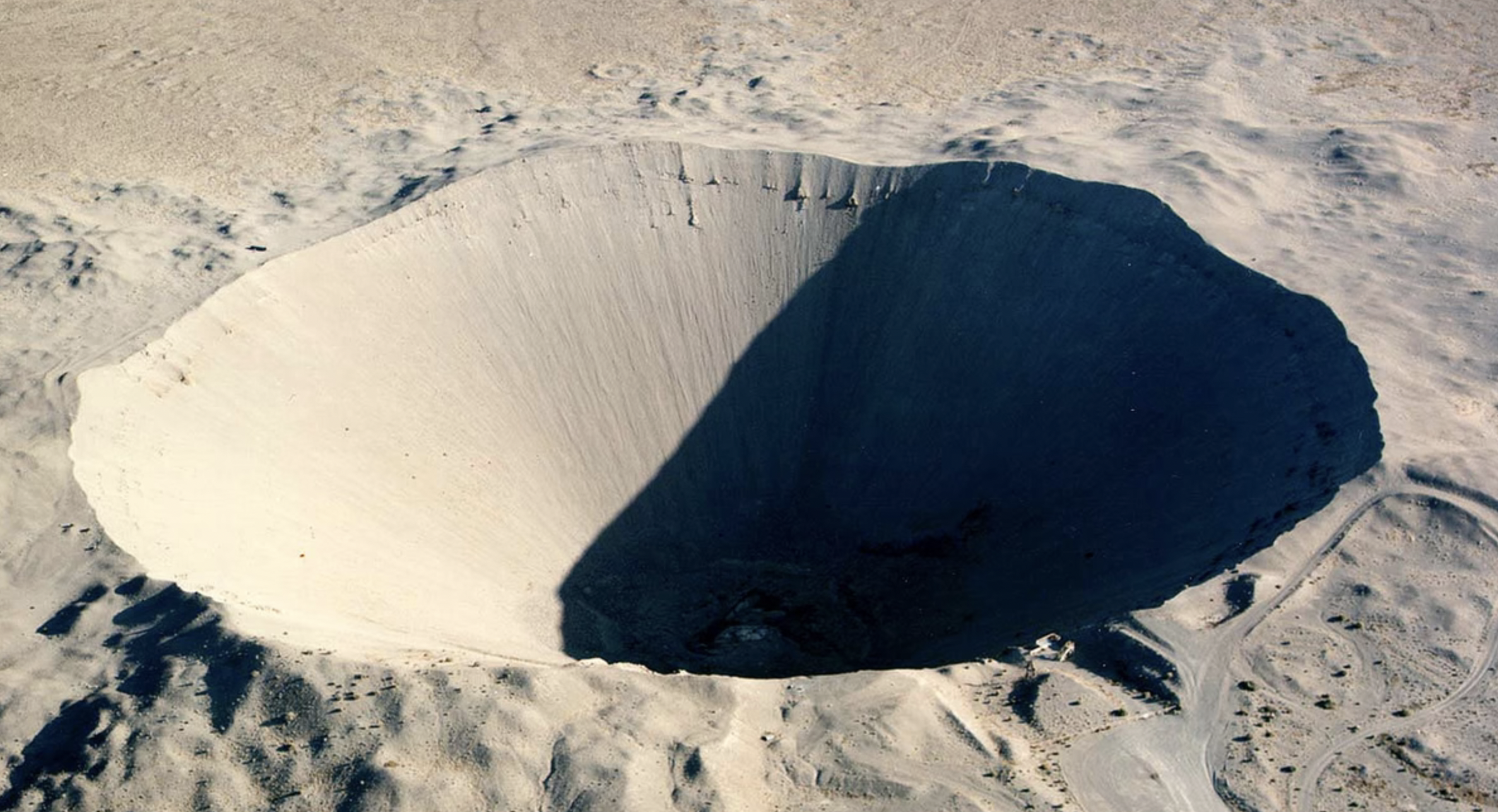
Surprisingly, when it came to nuclear weapons testing, war wasn’t the only thing on America’s mind. In 1962, Operation Storax sought to prove that atomic bombs could safely be used domestically to create bays and canals. The resulting Sedan explosion created a crater that was 1,280 feet wide and 320 feet deep.
The explosion of a 31-kiloton bomb was broadcast live
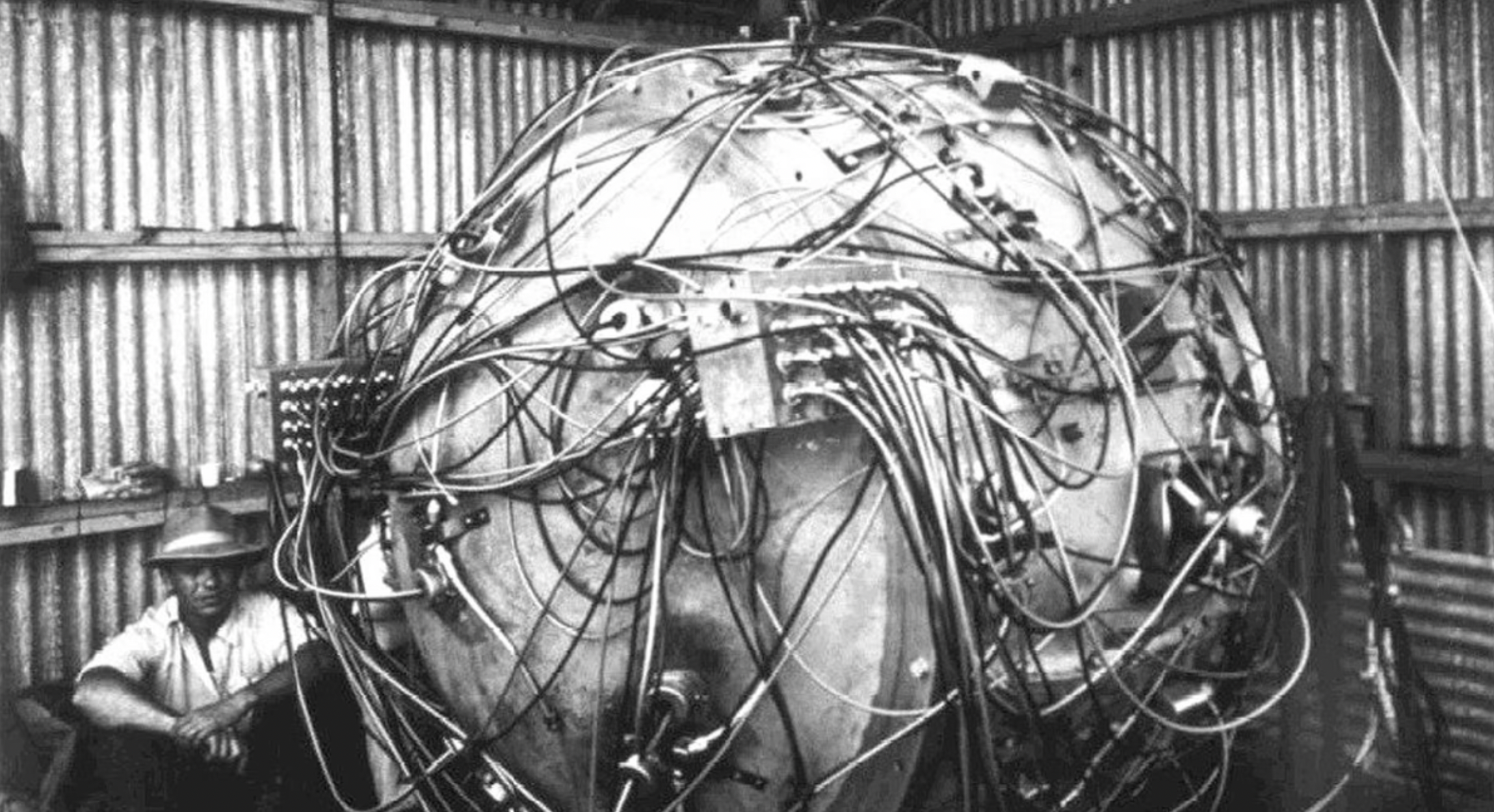
It wasn’t only just those in close proximity to Nevada that were able to see the horror and majesty of the atomic bomb testing. The detonation of one 31-kiloton bomb, known as “Big Shot”, was broadcast to the entire world. Select news stations, including PBS, were invited to watch from the edge of Nevada’s Yucca Lake, just ten miles away from ground zero.
The blasts had far-reaching health consequences
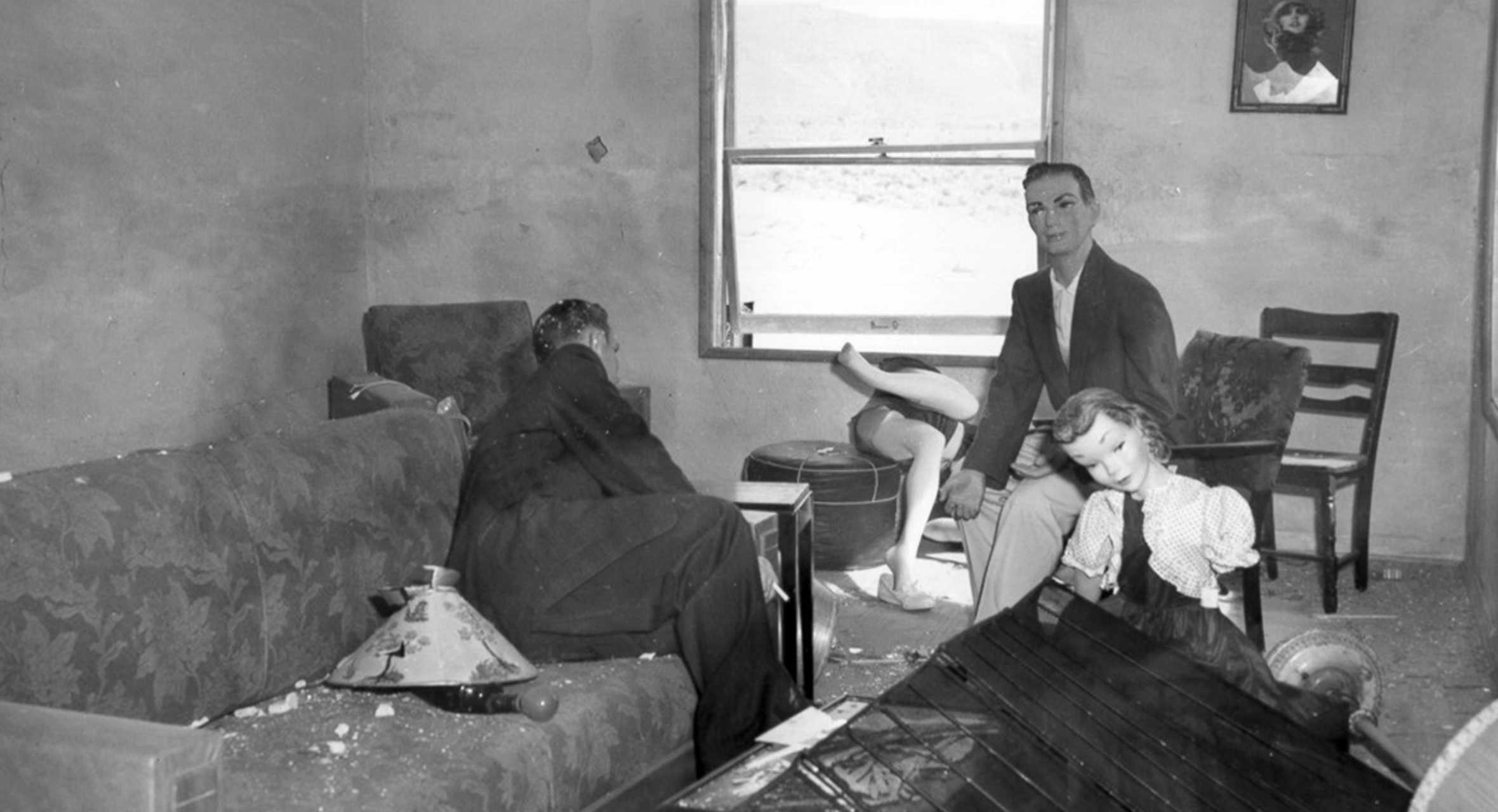
The town of St. George in Utah was close to the test site, so much so that parents would take their kids to the top of the highest hill to watch the mushroom clouds. Unfortunately, along with the view, the town was also being treated to high doses of radiation. Many of St. George’s children were later diagnosed with leukaemia or grew up to have thyroid issues.
There have been a lot of protests there
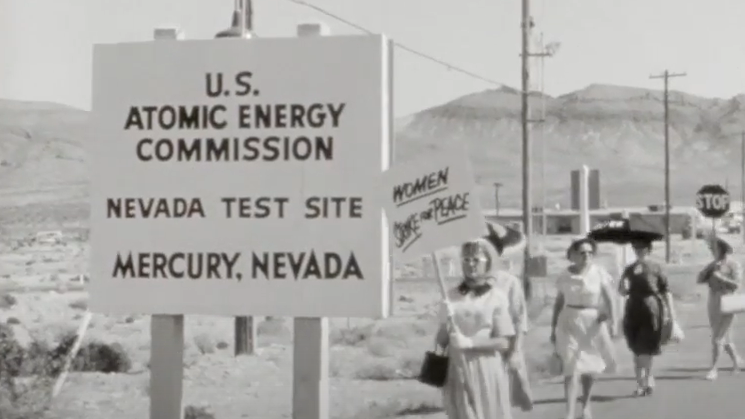
As the United States’ primary location for nuclear weapons testing, the Nevada Test Site has become one of the major symbols of the global nuclear arms race. Between 1986 and 1994, there were 536 anti-nuclear protests held at the site involving 37,488 participants, 15,740 of whom were arrested.
Testing there led to survival guidelines
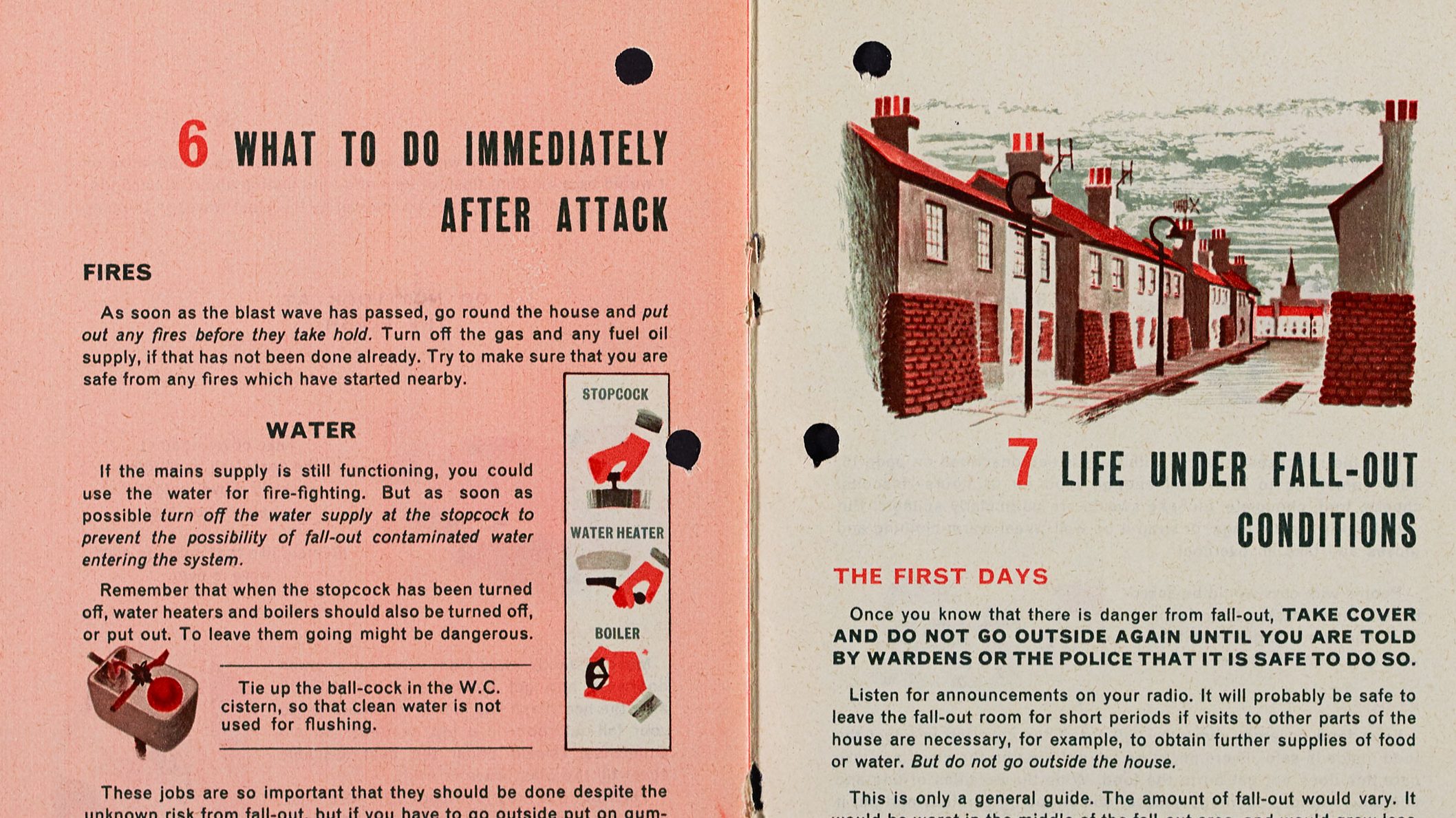
As well as exploring the capabilities of nuclear weapons, the tests carried out in Nevada were also used to draft guidelines for civilians in the event of a nuclear attack on the United States. A Civil Defence leaflet published in 1963 gave advice on surviving the explosion itself, as well as steps to take to limit exposure to fallout in the aftermath.
The area is one of the most contaminated places in the world
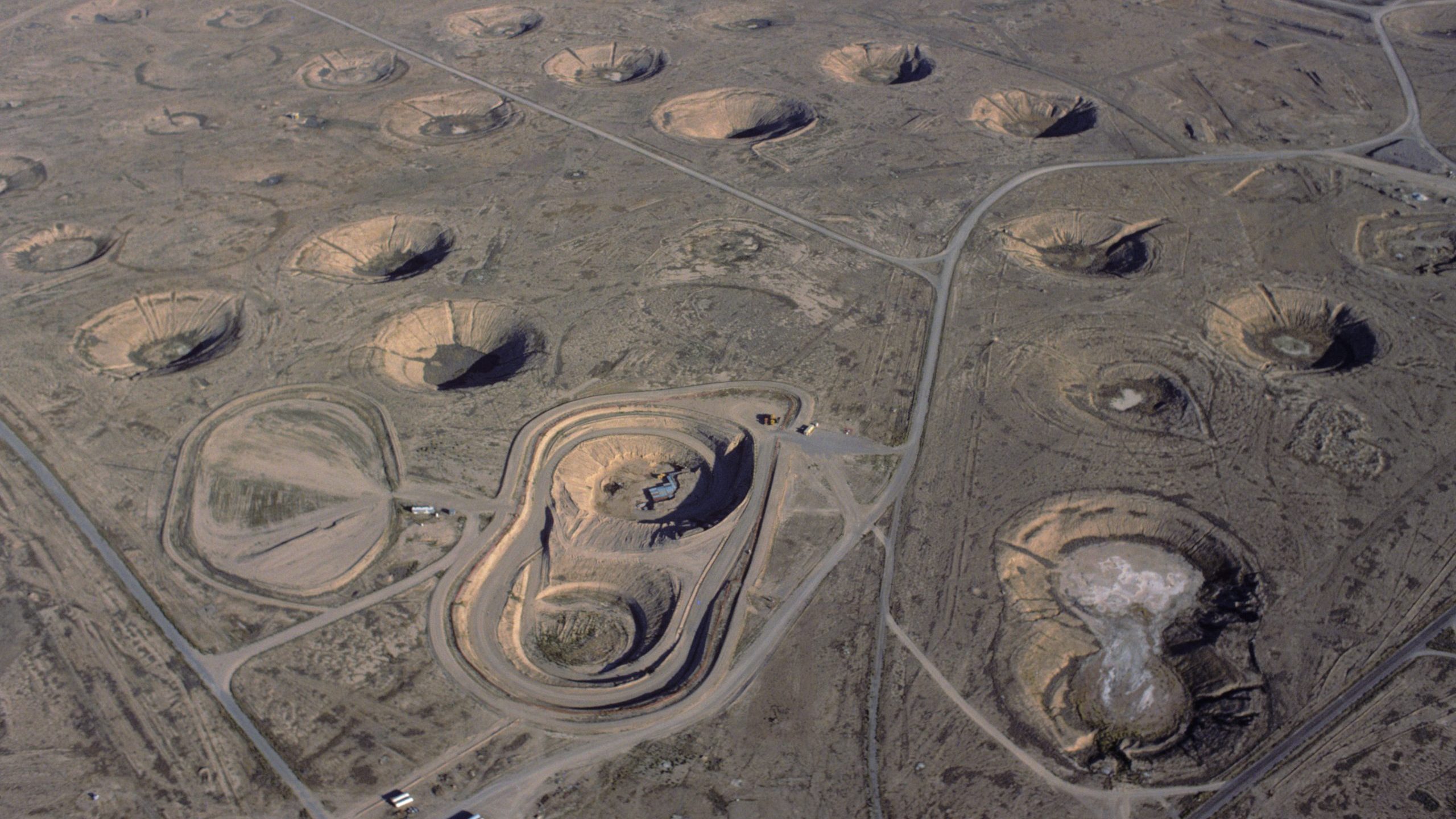
In 1992, after the government stopped using the Nevada Test Site to carry out nuclear explosions, the Department of Energy estimated that 300 megacuries of radioactivity remained in the environment area, making it one of the most radioactive places on Earth. While some of the radioactive isotopes have degraded, it will be thousands of years before the area is safe.
The site is marked as low priority for cleanup
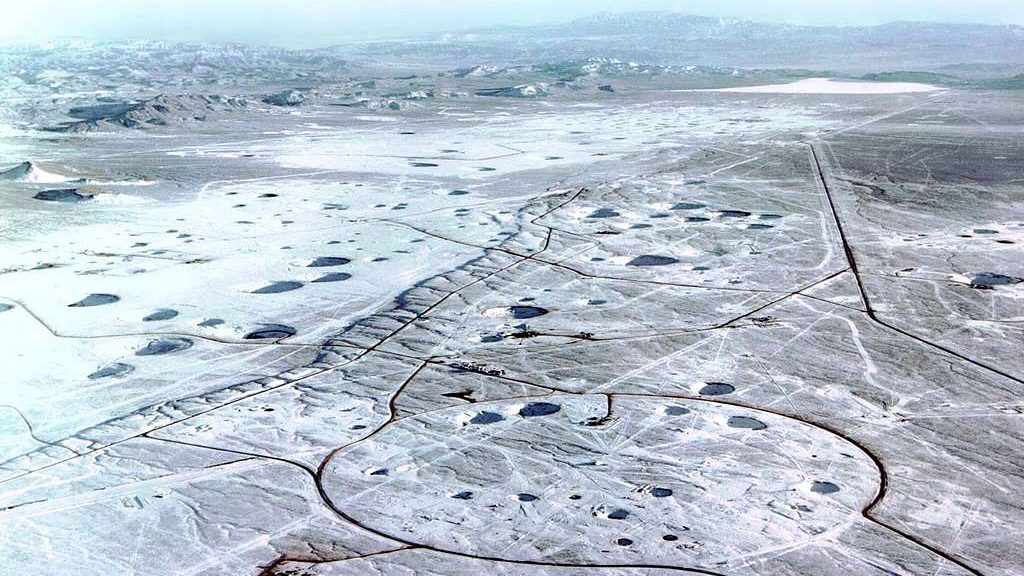
The United States Department of Energy has 48 monitoring wells at the Nevada Test Site, which it uses to regularly check the levels of radiation in the water table. Although these levels are millions of times higher than is safe, the risk of this water contaminating anything is considered minimal, and accordingly the site is designated as low priority for clean-up.
Most of the tests were carried out underground
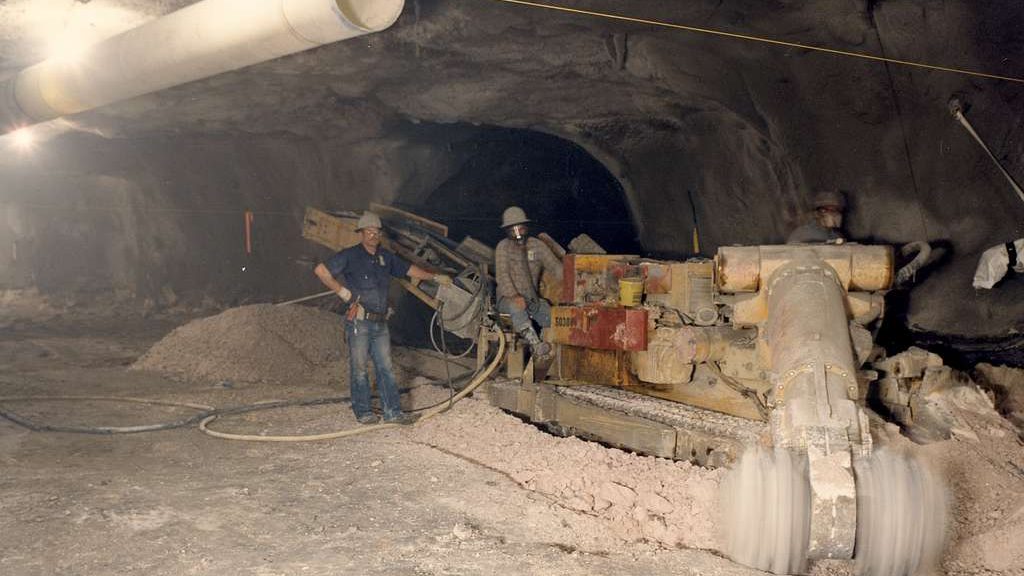
Of the more than 1,000 nuclear explosions that have taken place at the Nevada Test Site, only 100 were carried out above ground, with the last atmospheric test taking place on July 17th, 1962. The rest of the tests were carried out deep underground, either in large, manmade caverns or naturally occurring aquifers.
The site’s creation was prompted by Soviet nuclear testing
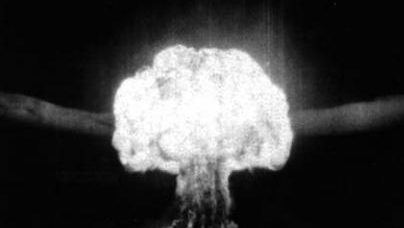
While the United States government had been mulling the creation of a mainland nuclear testing site for some time, the decision took on increased urgency after the Soviet Union carried out its first nuclear weapons test, known as RDS-1, in 1949. Just over a year later, the first detonations were carried out the Nevada Test Site.
Tests ended because of the Comprehensive Nuclear-Test-Ban Treaty
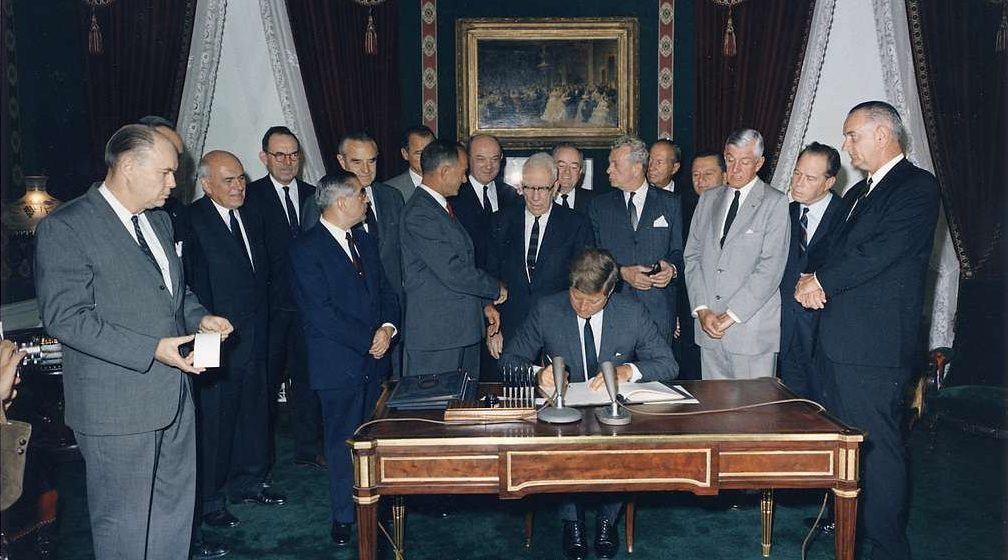
A multilateral treat adopted by the United Nations, The Comprehensive Nuclear-Test-Ban Treaty banned all testing of nuclear weapons. Although the United States has never officially ratified the treaty, it abides by it nonetheless, and hasn’t carried out any nuclear detonations since 1992.
The site was chosen to map fallout
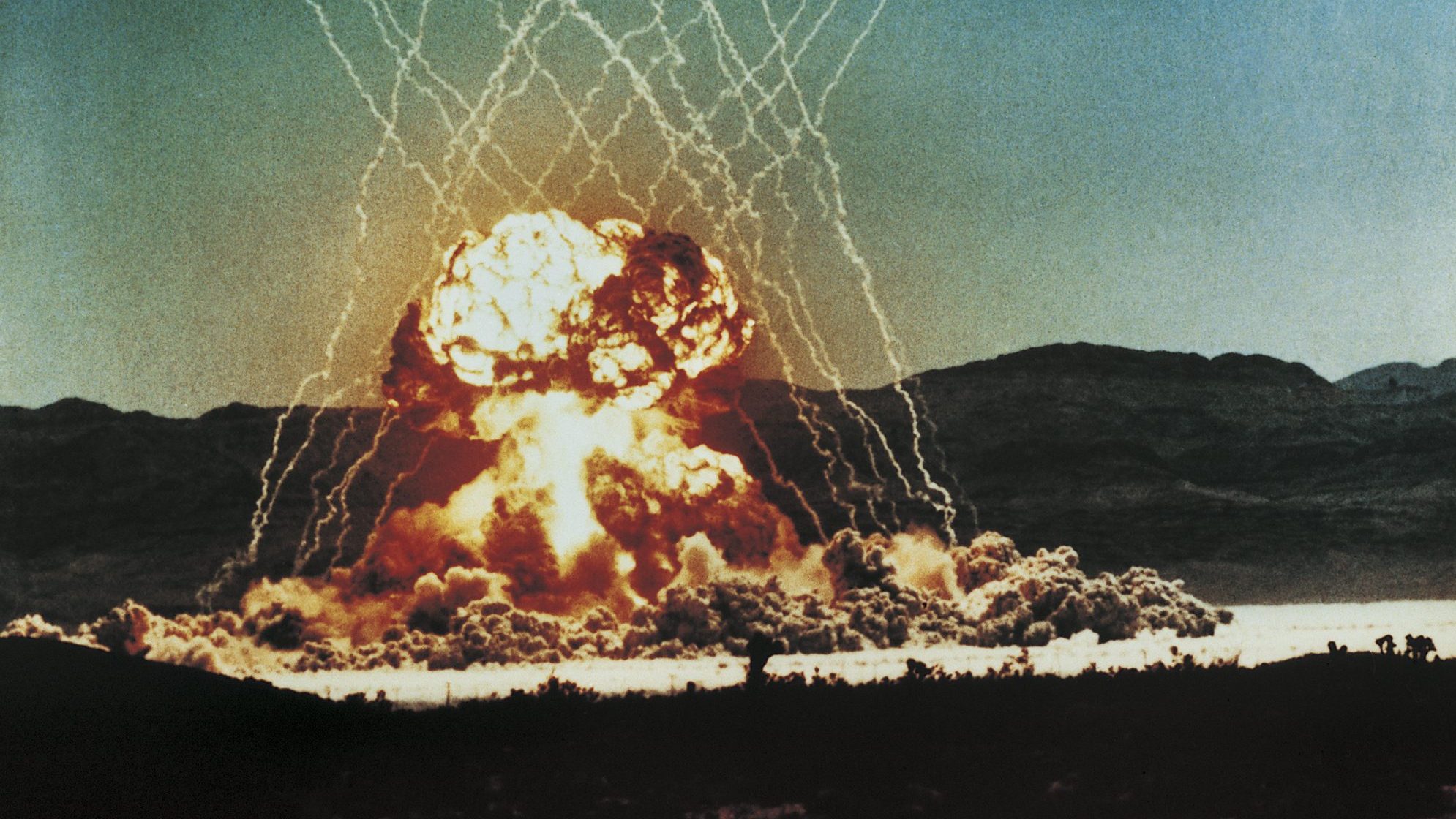
Before the Nevada Test Site was chosen as the location for the military’s nuclear tests, there had been plans to use the island of Amchitka off the coast of Alaska. Ultimately, it was determined that it would be easier to map the fallout in Nevada, and the site was established.
The site is still used to store nuclear materials
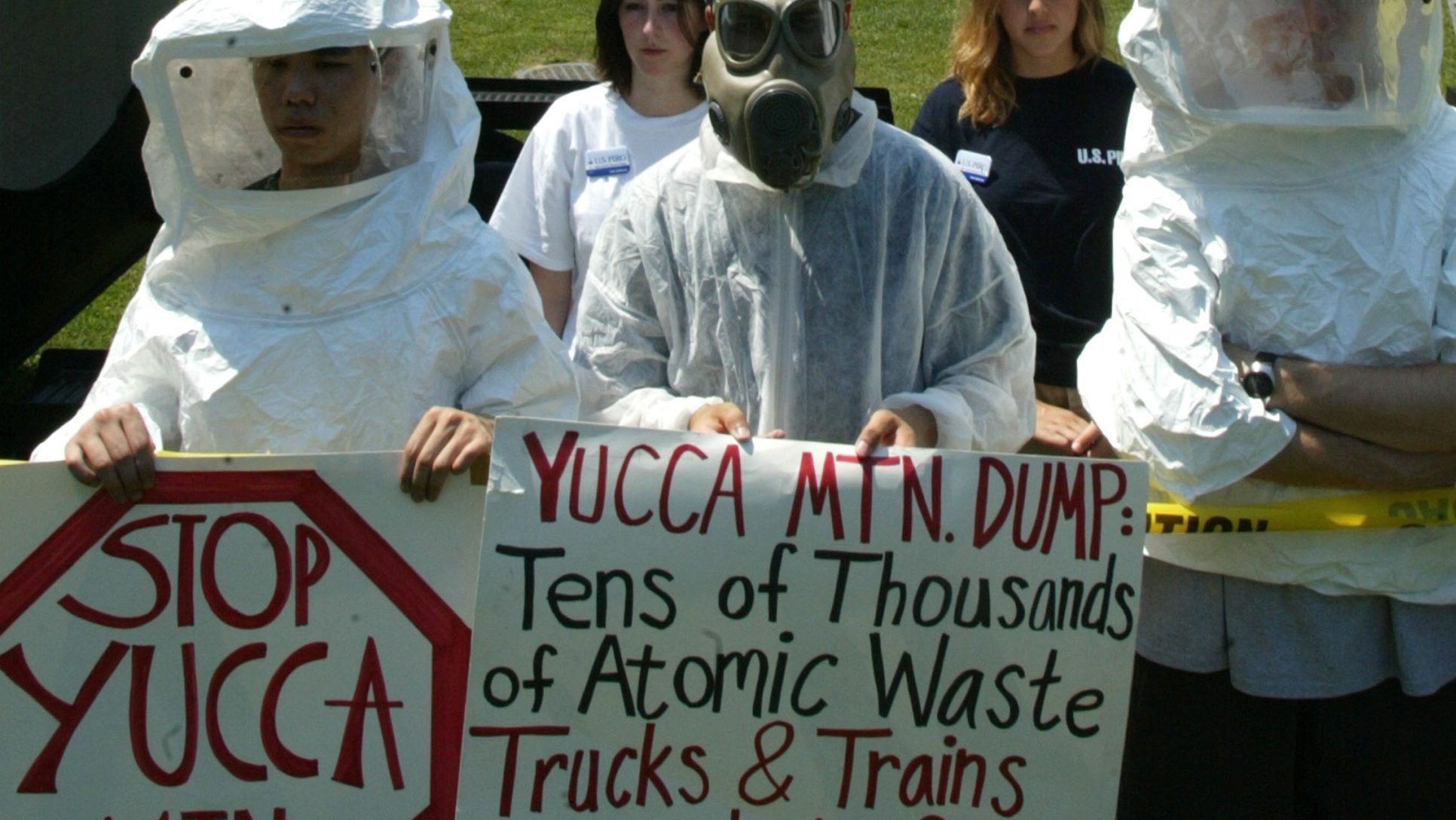
Although no nuclear tests have been carried out at the site since 1992, the area is still used to store atomic materials. In 2018, Nevada sued the federal government over a plan to store “more than a metric ton” of plutonium at the site, and in 2022 it was revealed that 13,625 cubic meters of nuclear waste have been transported to the site for disposal.
Atmospheric testing was stopped because of contamination
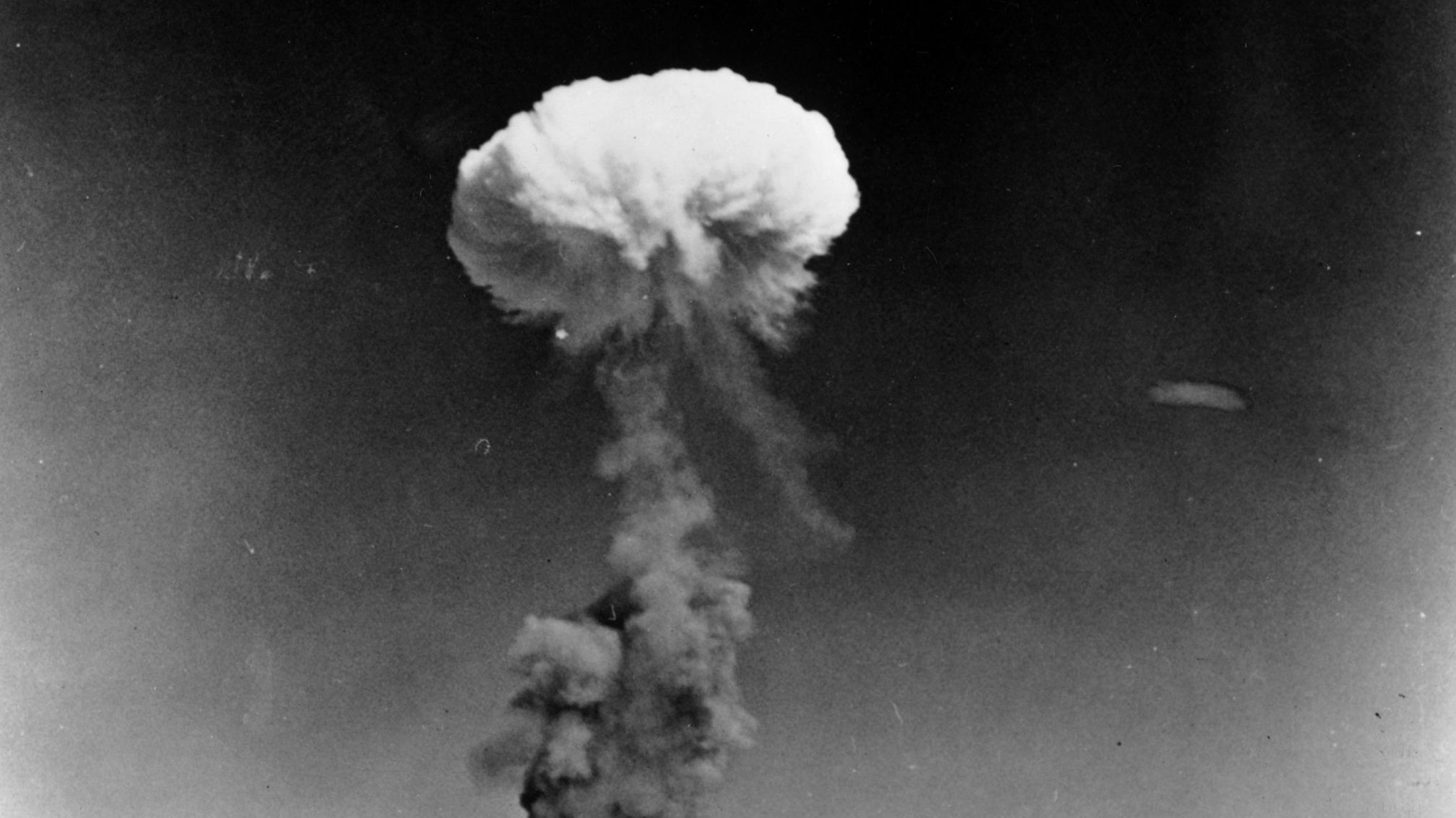
As rates of cancer and thyroid problems skyrocketed amongst nearby residents and staff at the test site, the government realised that contamination from the nuclear tests was the culprit. This led to the cessation of above ground detonations – known as atmospheric testing – with all subsequent explosions taking place deep underground.
The site was established by President Truman
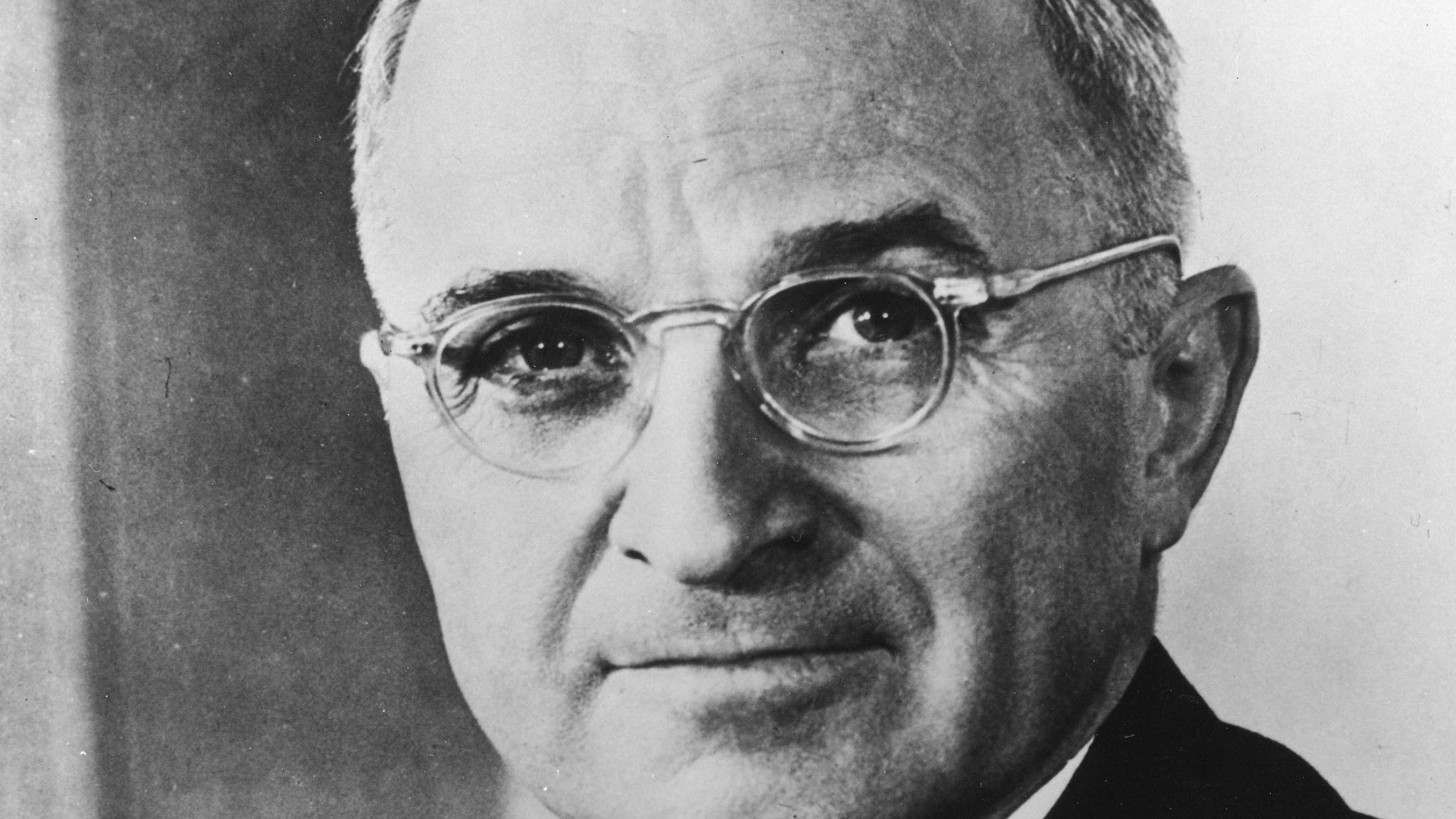
After the decision was made to create a nuclear weapons testing site on the United States’ mainland, the Atomic Energy Commission considered hundreds of potential candidate sites. Eventually, the Las Vegas Bombing and Gunnery Range was selected, and on December 18th, 1950, President Truman authorised the establishment of what would become the Nevada Test Site.
Livestock was affected in nearby towns
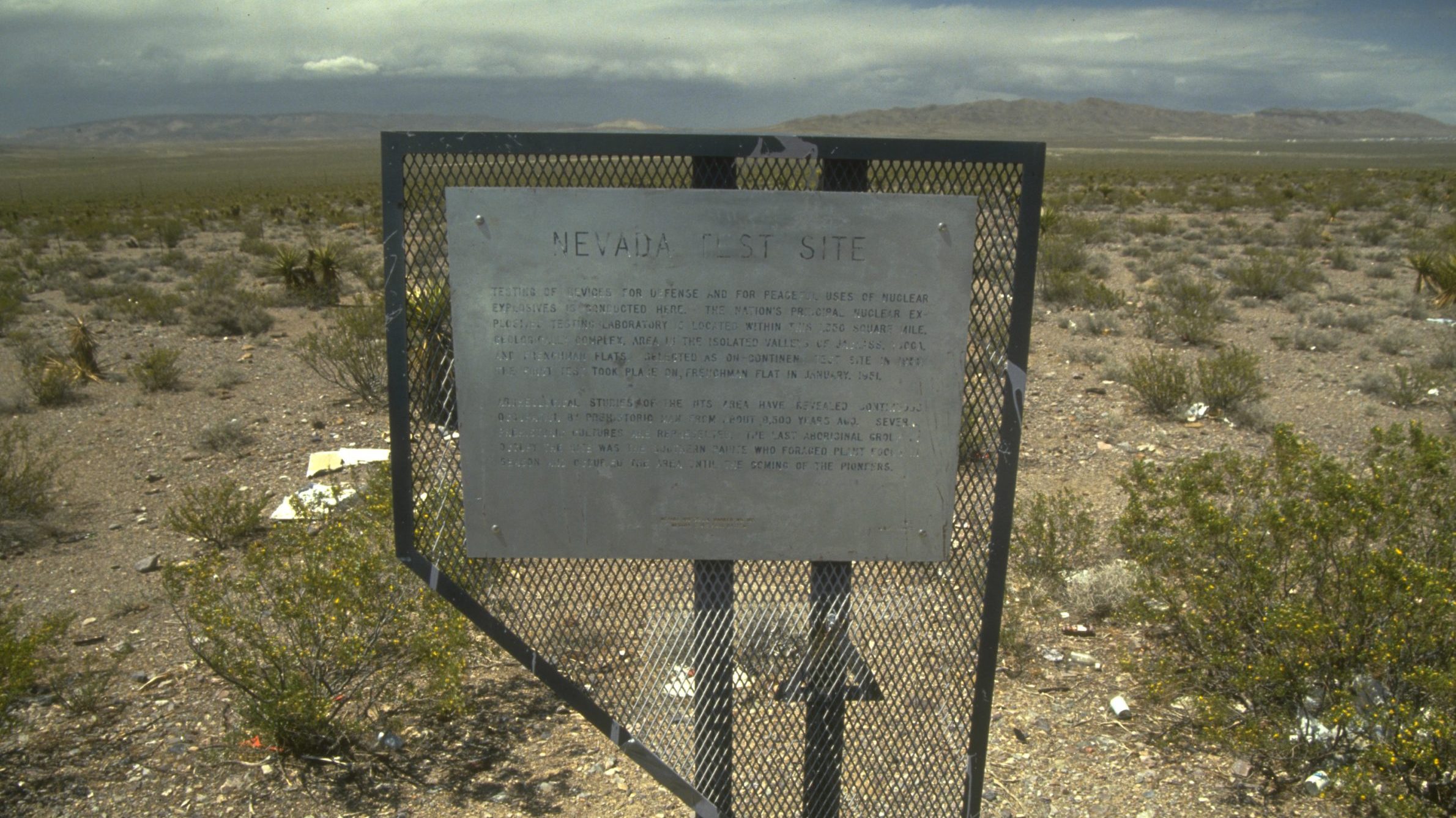
Many residents of towns and cities near the Nevada Test Site believed the government’s assurances that they weren’t in harm’s way, even when ominous signs started appearing. Livestock began showing the effects of radioactive contamination long before humans, with Claudia Peters, who was a child in St. George during the tests, recalling thinking it was normal to see “piles of dead lambs with two heads.”
Testing was driven by the Cold War
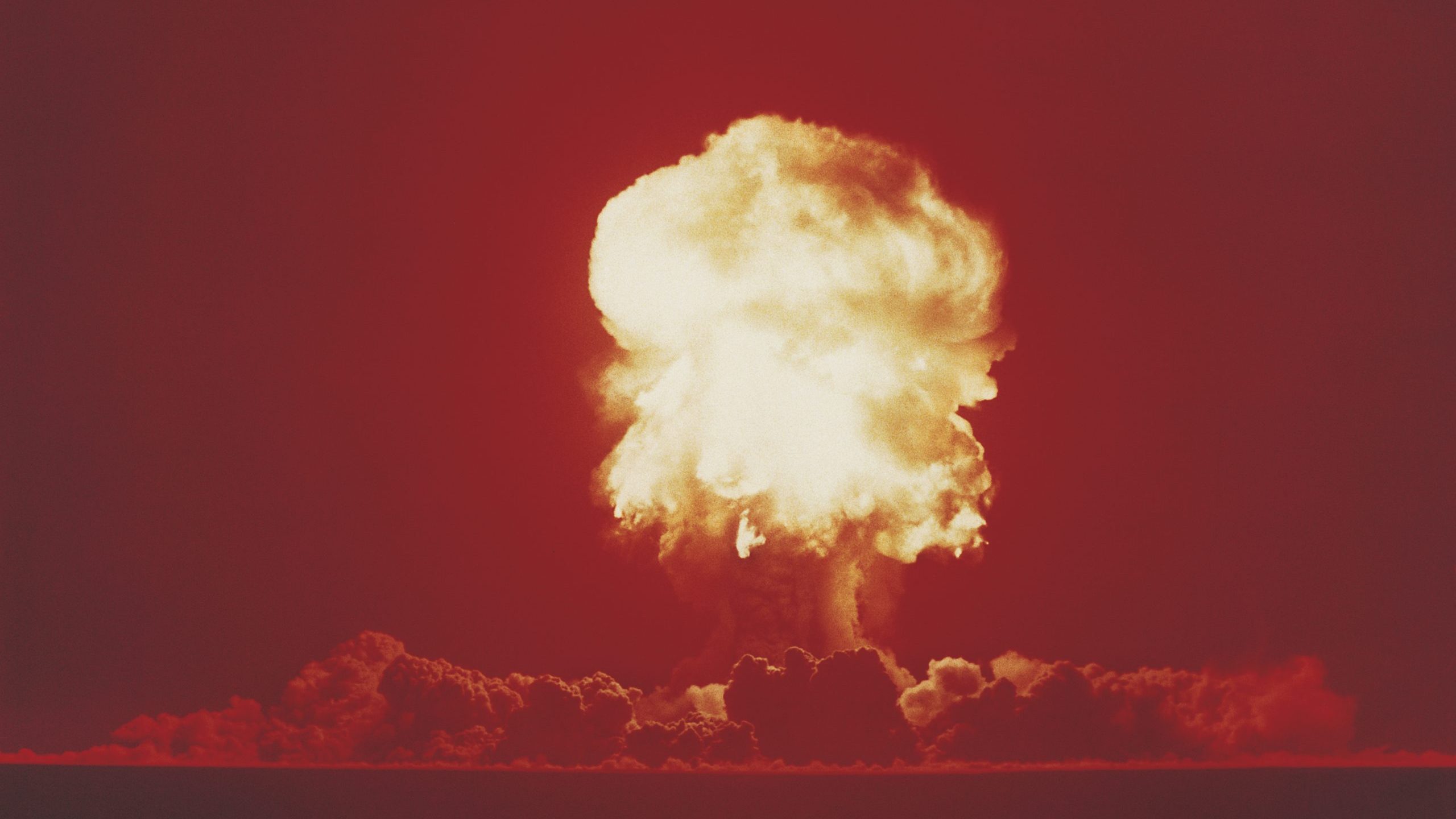
After the bombings of Hiroshima and Nagasaki demonstrated the terrifying power of nuclear weapons, countries started racing to build their own arsenals. The Soviet Union, in particular, invested heavily into nuclear weapons projects, much to the alarm of the United States. The scale and pace of testing at the Nevada Test Site can largely be attributed to anxieties stoked by the Cold War.
Radiation from the site may have killed John Wayne
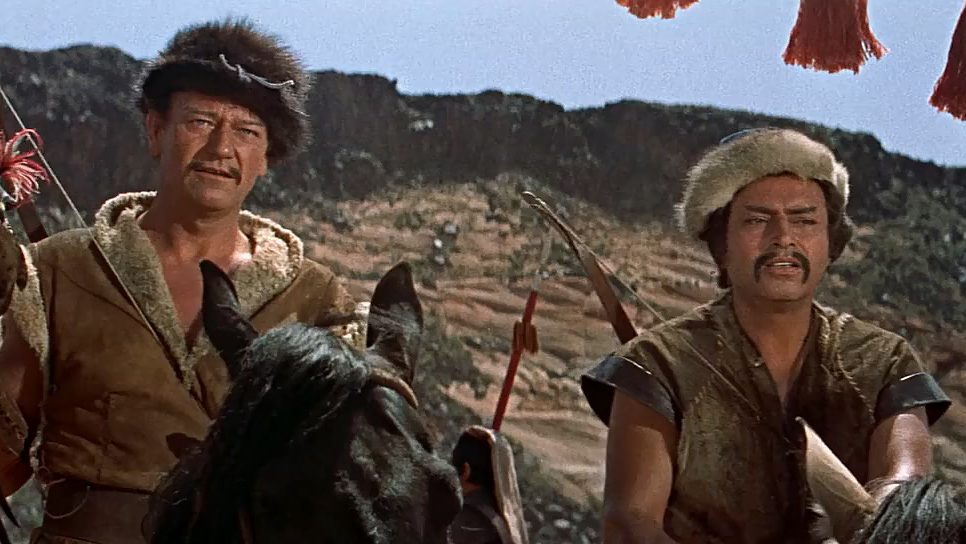
The 1956 film The Conqueror – which starred iconic American actor John Wayne as Genghis Khan – was filmed near St. George, Utah, 137 miles downwind from the Nevada Test Site. Of the 220 cast and crew that worked on the film, 91 went on to develop cancer, with 26, including Wayne, dying as a result.
The government believed meteorologists could predict fallout
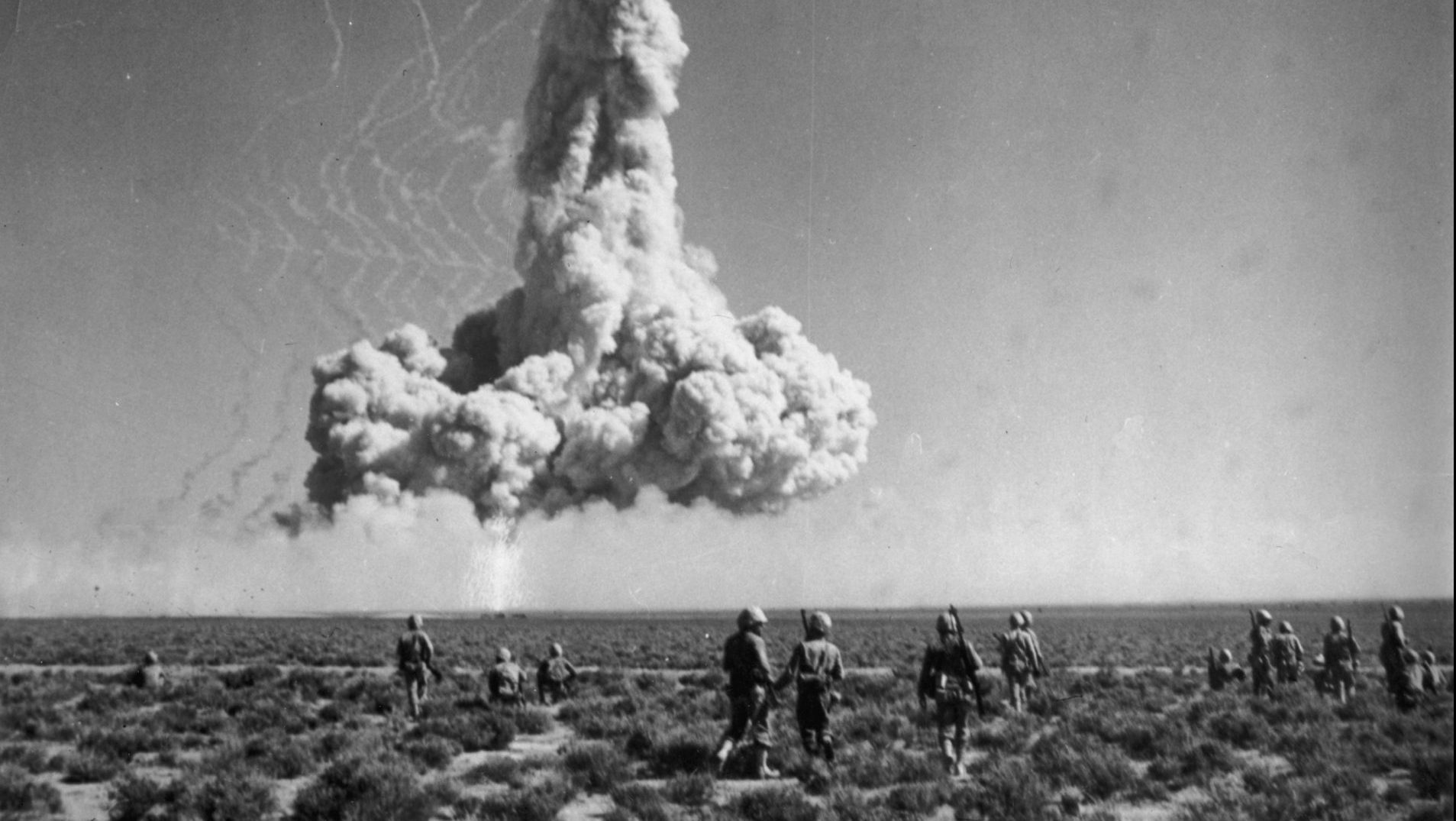
Declassified documents have revealed that, when testing first began in Nevada, the United States government was confident that meteorologists would be able to predict the spread of fallout. Unfortunately, their confidence was misplaced, and radioactive particles were spread by wind over vast distances, with research suggesting they eventually reached most parts of the US.
The site is used by the British
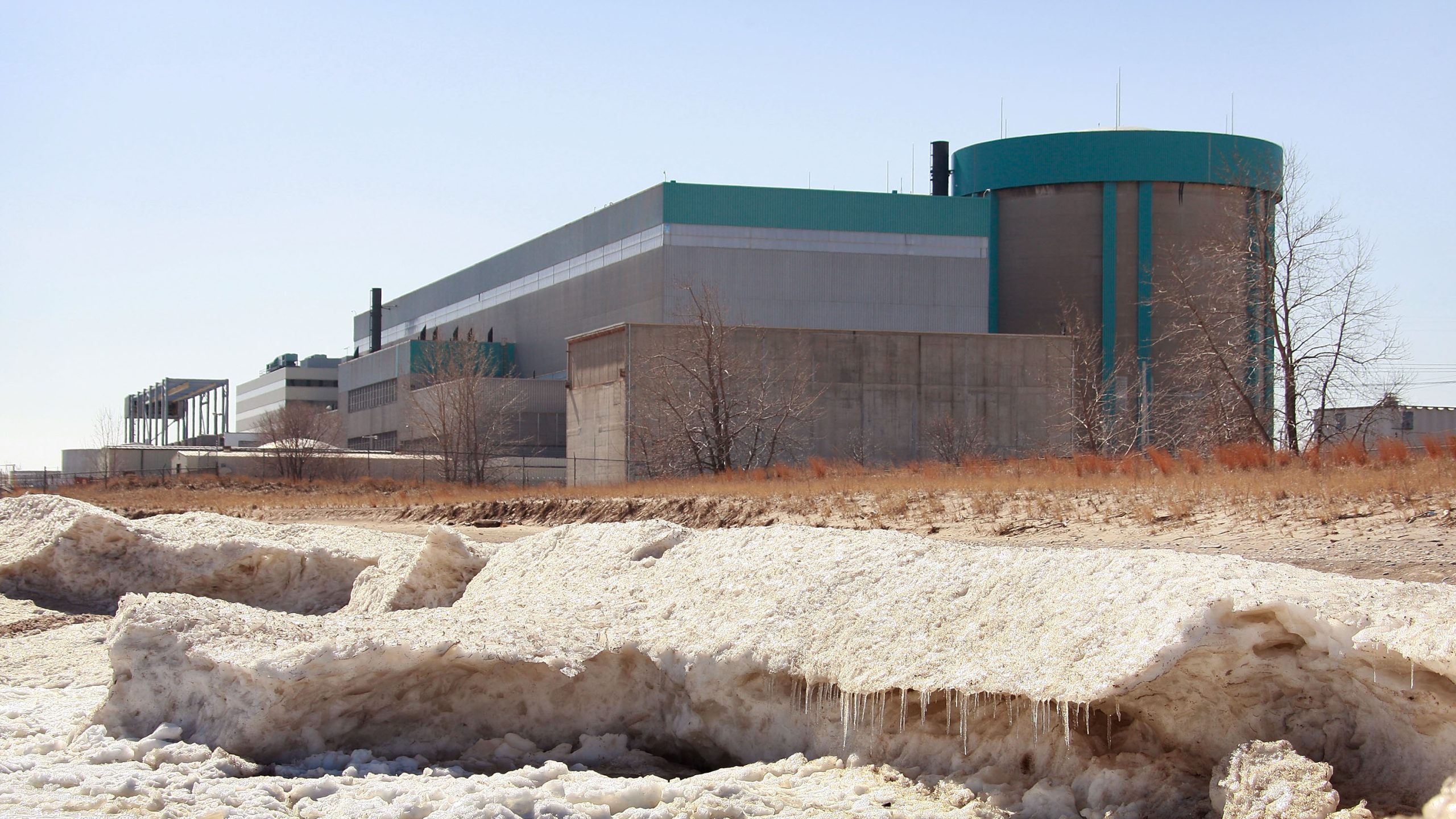
The Nevada Test site continues to be used for the development of atomic weapons, with a number of different laboratories frequently collaborating on research. Amongst these is the British Atomic Weapons Establishment, a branch of the Ministry of Defence responsible for furthering the United Kingdom’s nuclear weapons capabilities.
Congress passed an act to compensate victims of radiation
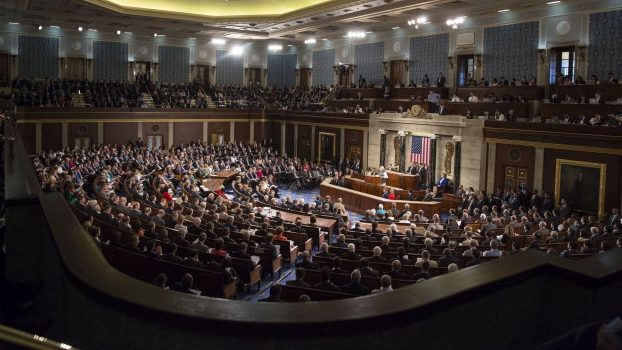
Despite the well-known effects of radioactive contamination, it took decades for the government to admit that the sudden jump in rates of cancer in areas around the test site might possibly be related to the nuclear explosions. Eventually, after significant pressure from advocacy groups, congress passed the Radiation Exposure Compensation Act. To date, $2 billion have been paid out.
The Nevada Test Site was opened to keep costs down
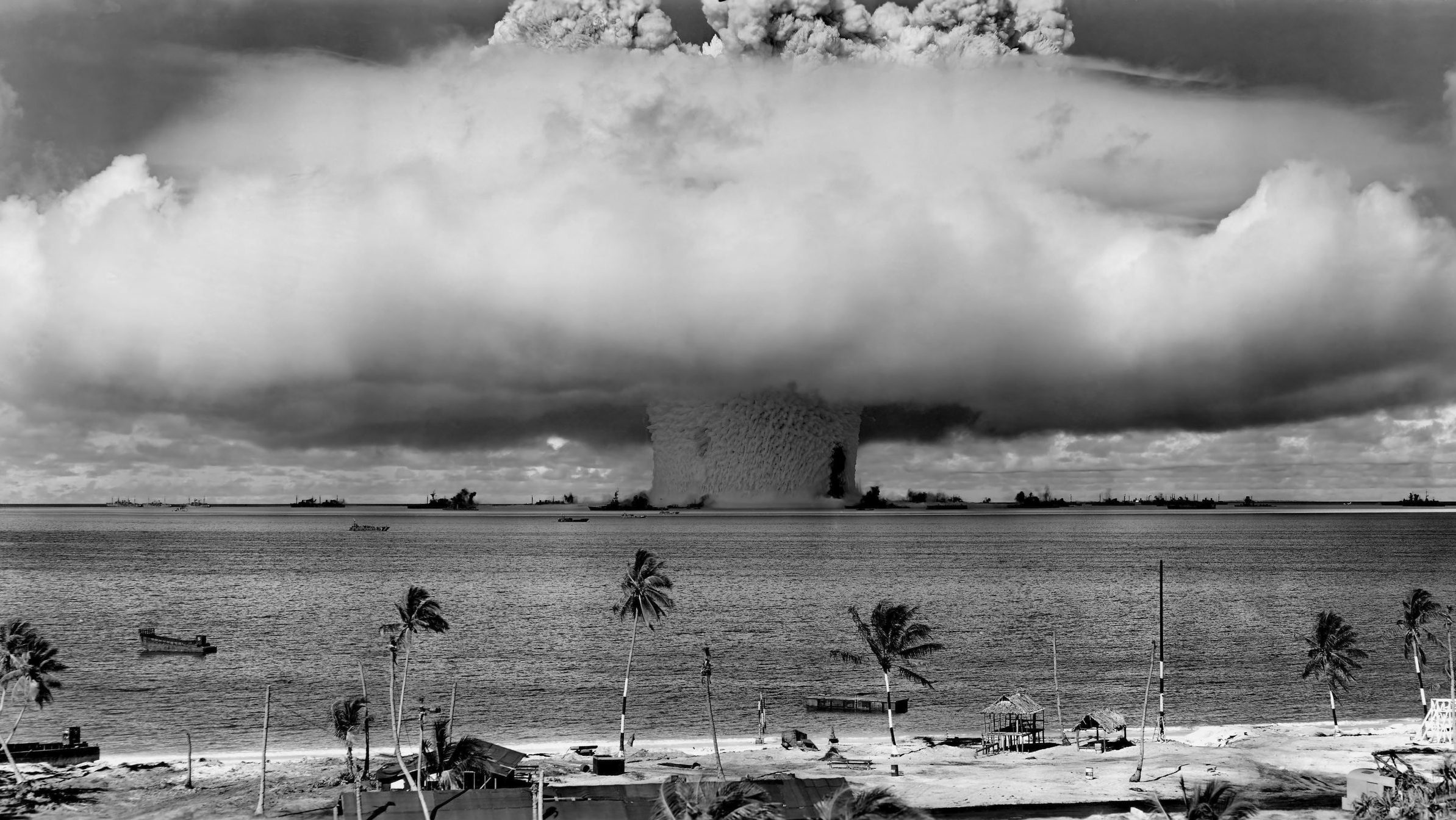
Prior to the establishment of the Nevada Test Site, the United States government tested nuclear weapons on the Bikini Atoll, a tiny island in the Pacific, 4,600 miles from the US mainland. While this ensured that no fallout could contaminate US cities and citizens, it was also extremely extremely costly, and the government eventually decided to open a test site closer to home.
The site is still used for classified work
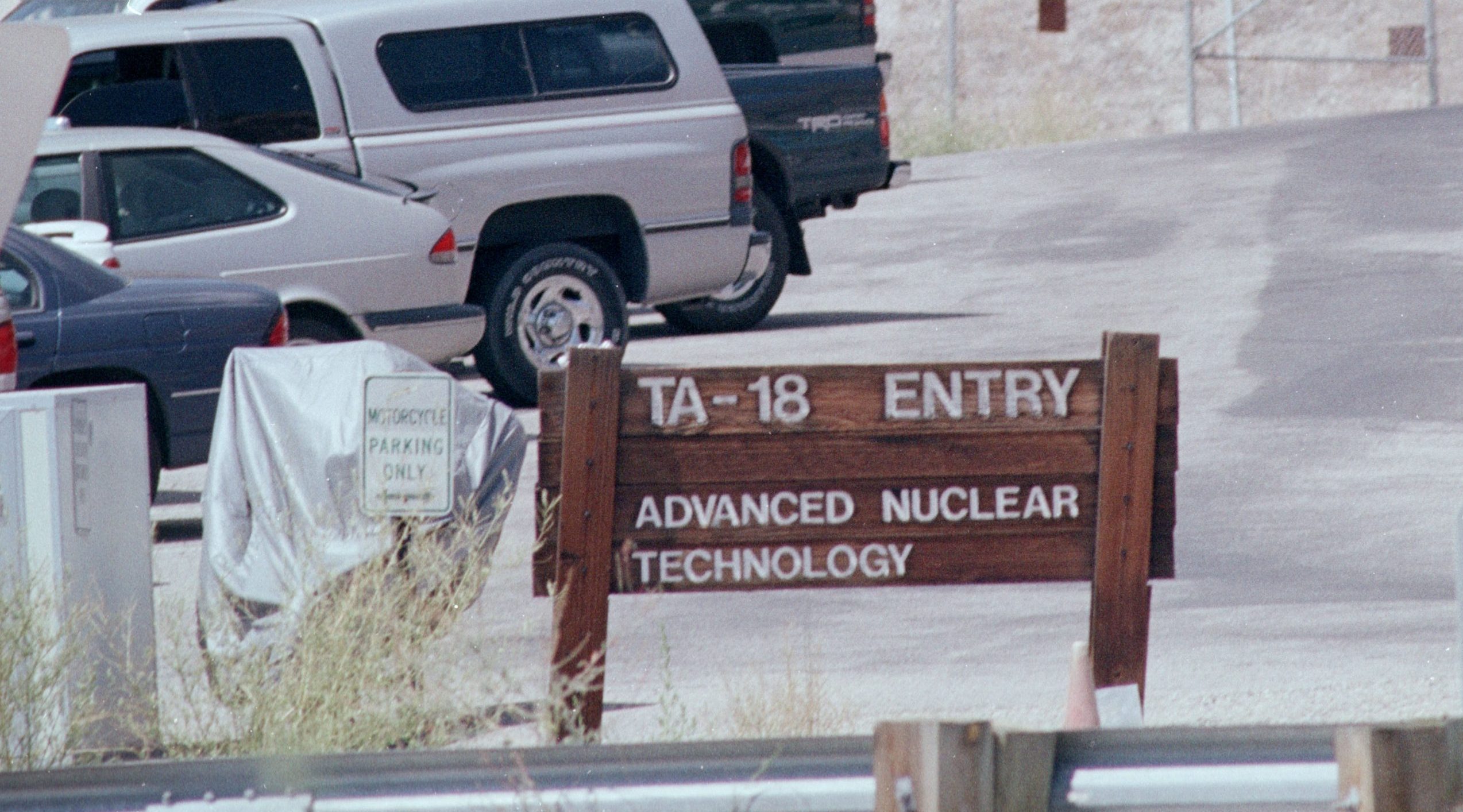
Although the United States government no longer carries out nuclear tests at the Nevada Test Site, they still use the area for highly classified military work. Access to the area is strictly prohibited to all but a few carefully vetted scientists and military personnel, and taking photographs inside the site is illegal.
Nearby residents were seriously misinformed
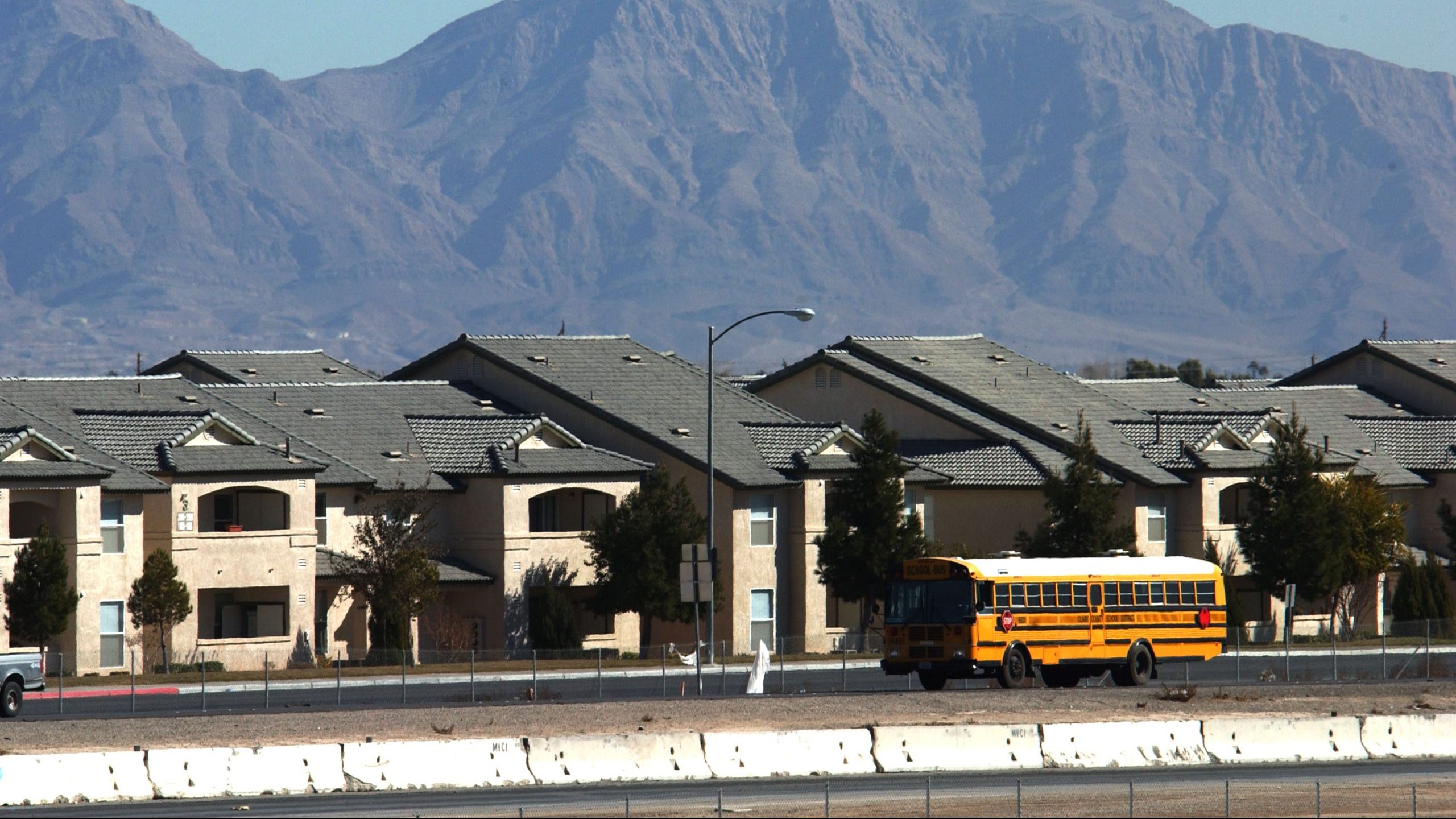
Due to the well-documented effects of the Hiroshima and Nagasaki bombings, residents living near the Nevada Test Site were understandably alarmed that nuclear weapons would be tested within eyeshot of their homes. The Atomic Energy Commission subsequently issued a brochure that claimed residents would be exposed to ‘only slightly more than normal radiation which you experience day in and day out wherever you may live’.
Soldiers were exposed to the explosions
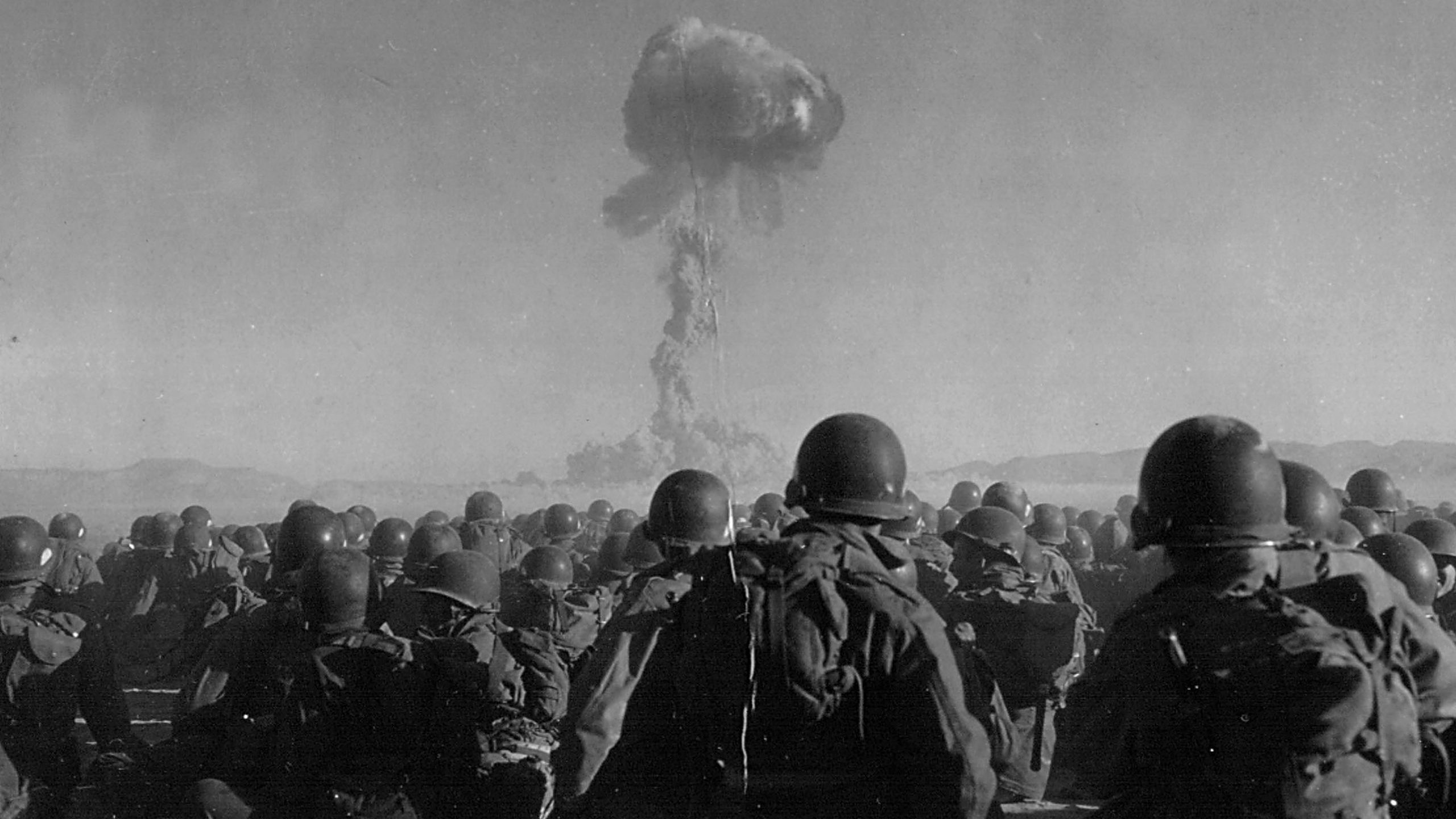
As well as testing the effects of nuclear weapons on structures and military equipment, the military was also interested in the effect an explosion would have on troops. Several experiments involved placing soldiers in trenches a few miles from the blast and then observing their reactions, which, understandably, weren’t great, with many soldiers believing that the army was trying to kill them.
People who lived near the test sites are known as ‘downwinders’
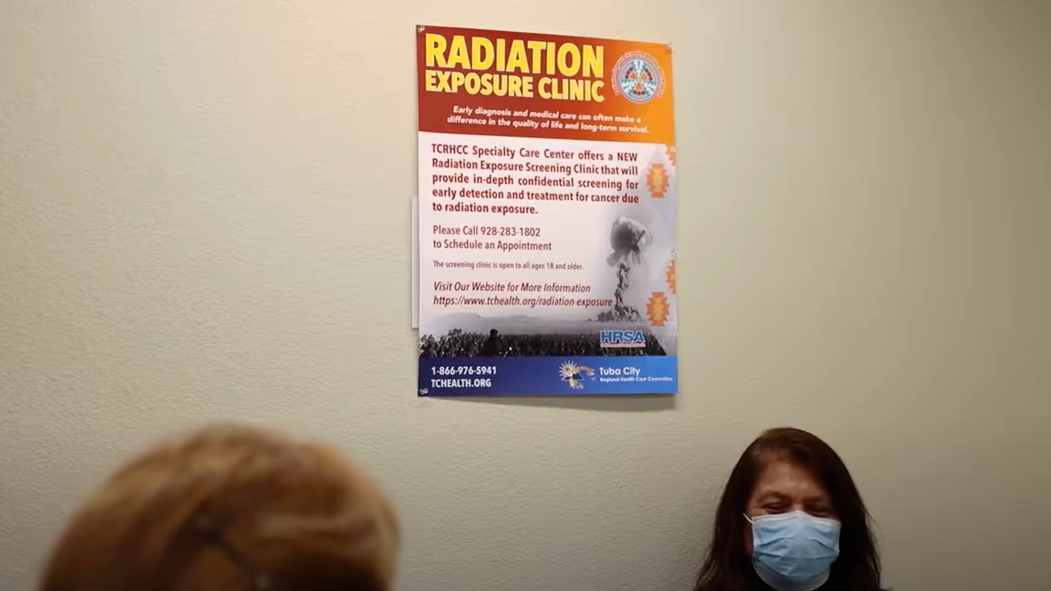
Residents of towns and cities near the Nevada Test Site that were contaminated with radiation eventually became known as ‘downwinders.’ It took years of lobbying before the government finally recognised the harm it had done to these citizens, and many feel that not enough has been done to compensate them for the suffering they continue to endure.
The site kept growing
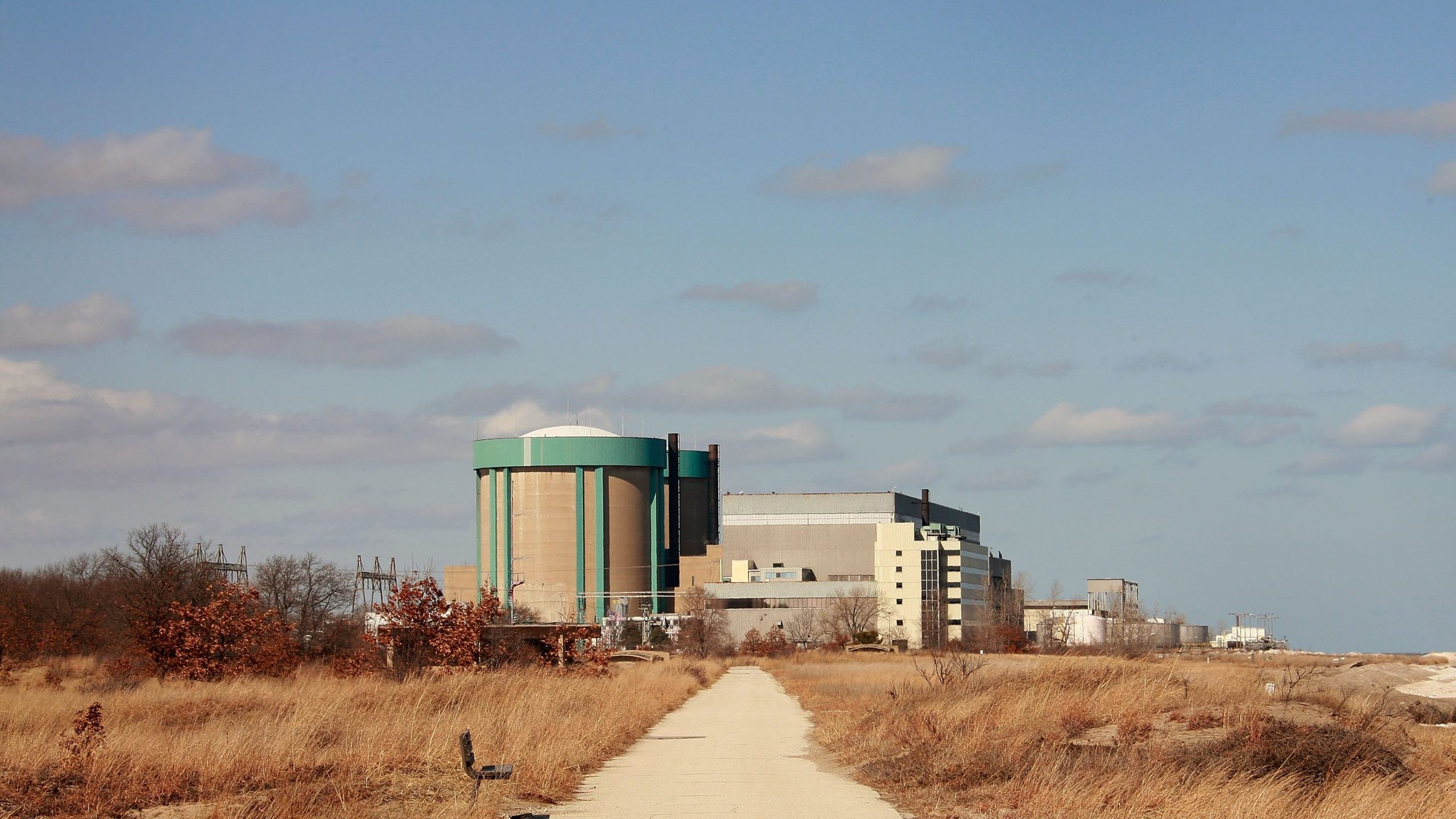
The Nevada Test Site was initially established as a 680-square-mile area of the Las Vegas Bombing and Gunnery Range. However, as testing became more and more complex, the site required increasingly large swathes of land. The site expanded in 1958, 1961, 1965, 1967 and finally in 1999, eventually reaching its current size of 1,355-square-miles.
The NTS was initially intended for small scale tests
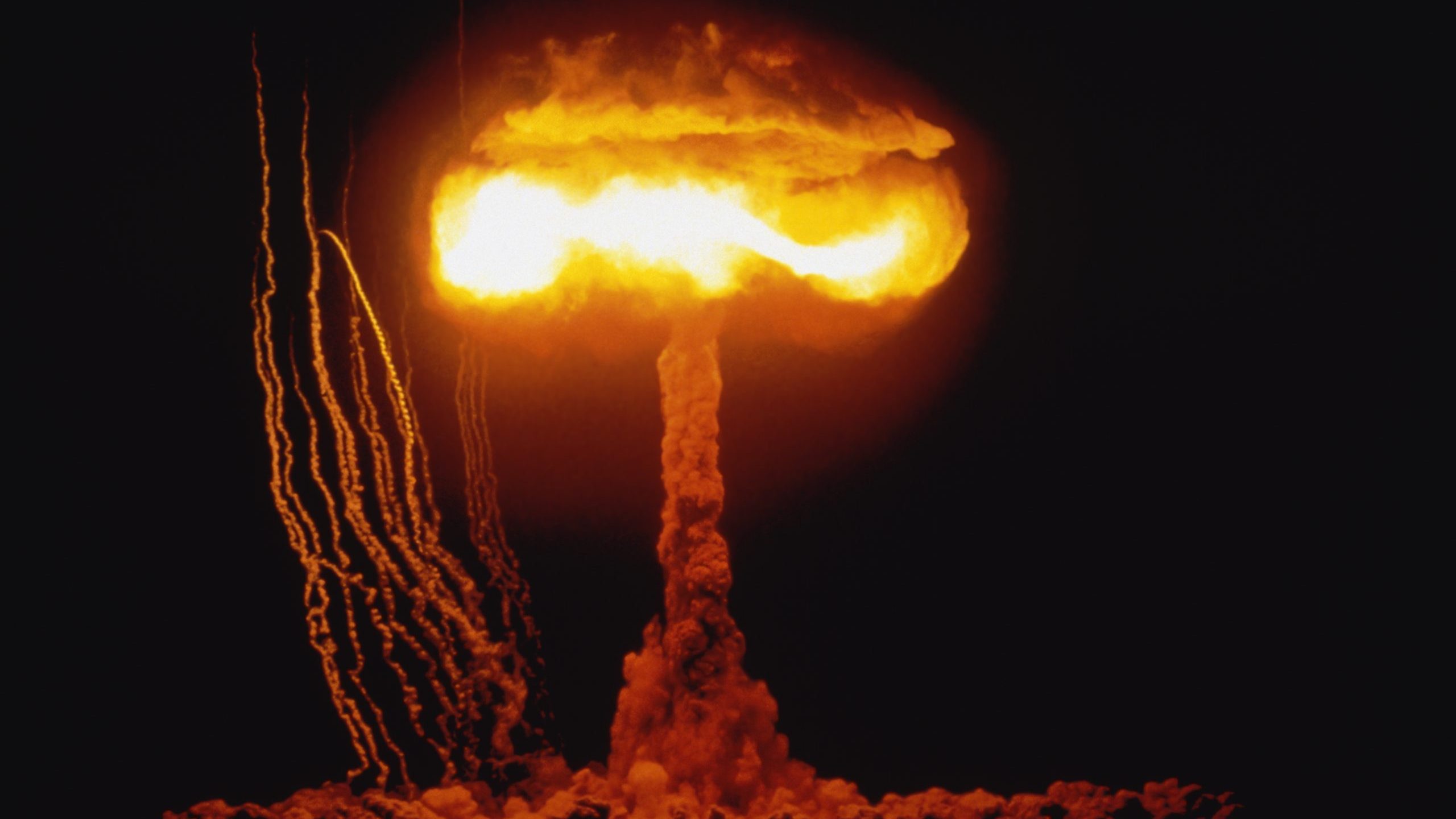
When the Nevada Test Site was established, the Atomic Energy Commission envisioned that it would used to conduct experiments using low-yield bombs, the results of which could then be used to design more effective weapons. In reality, tests involving highly explosive weapons quickly became the norm.
Carl Sagan was arrested for protesting at the site
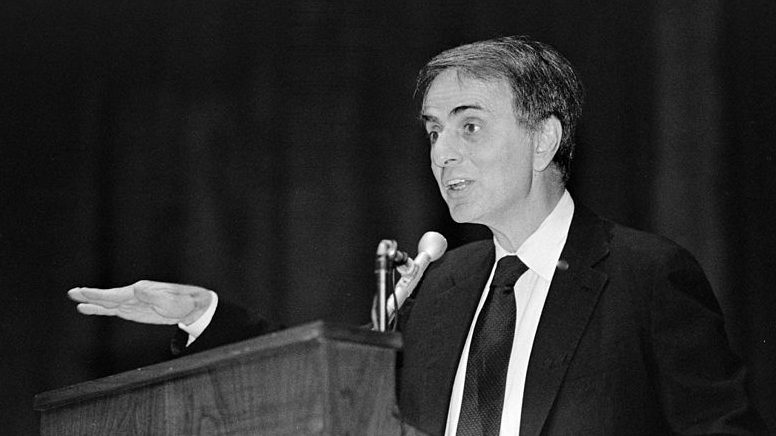
On February 5th, 1987, over 400 people were arrested after trying to gain entry to the Nevada Test Site during a protest. Amongst those arrested were a number of celebrities including Martin Sheen, Kris Kristofferson and Robert Blake, as well as renowned astronomer Carl Sagan, who was staunchly opposed to nuclear proliferation.
The site is used to ensure existing weapons remain safe
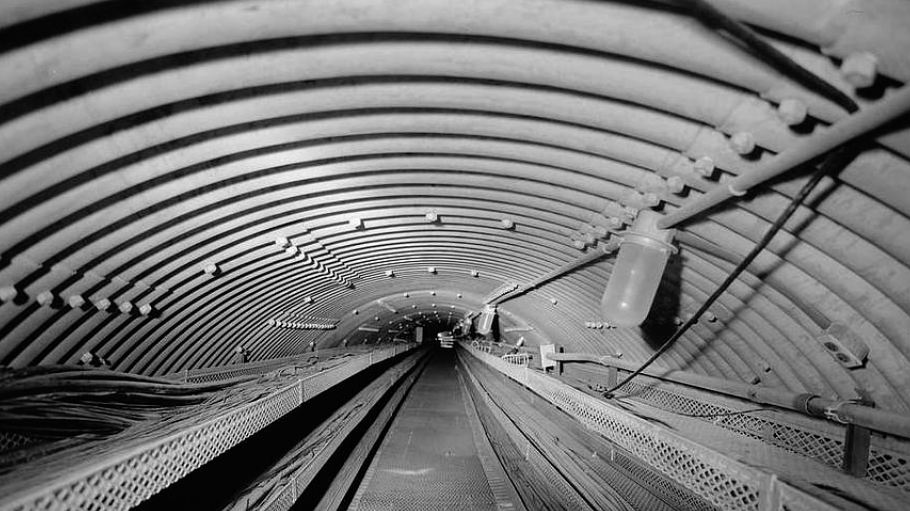
The United States is believed to possess a stockpile of around 3,700 nuclear weapons, and ensuring these devices remain safe poses a significant, urgent challenge. This task falls to the Stockpile Stewardship Program, a branch of the Department of Energy which carries out the majority of its experiments at the Nevada Test Site. The program costs around $4 billion a year.
You can go on guided tours there
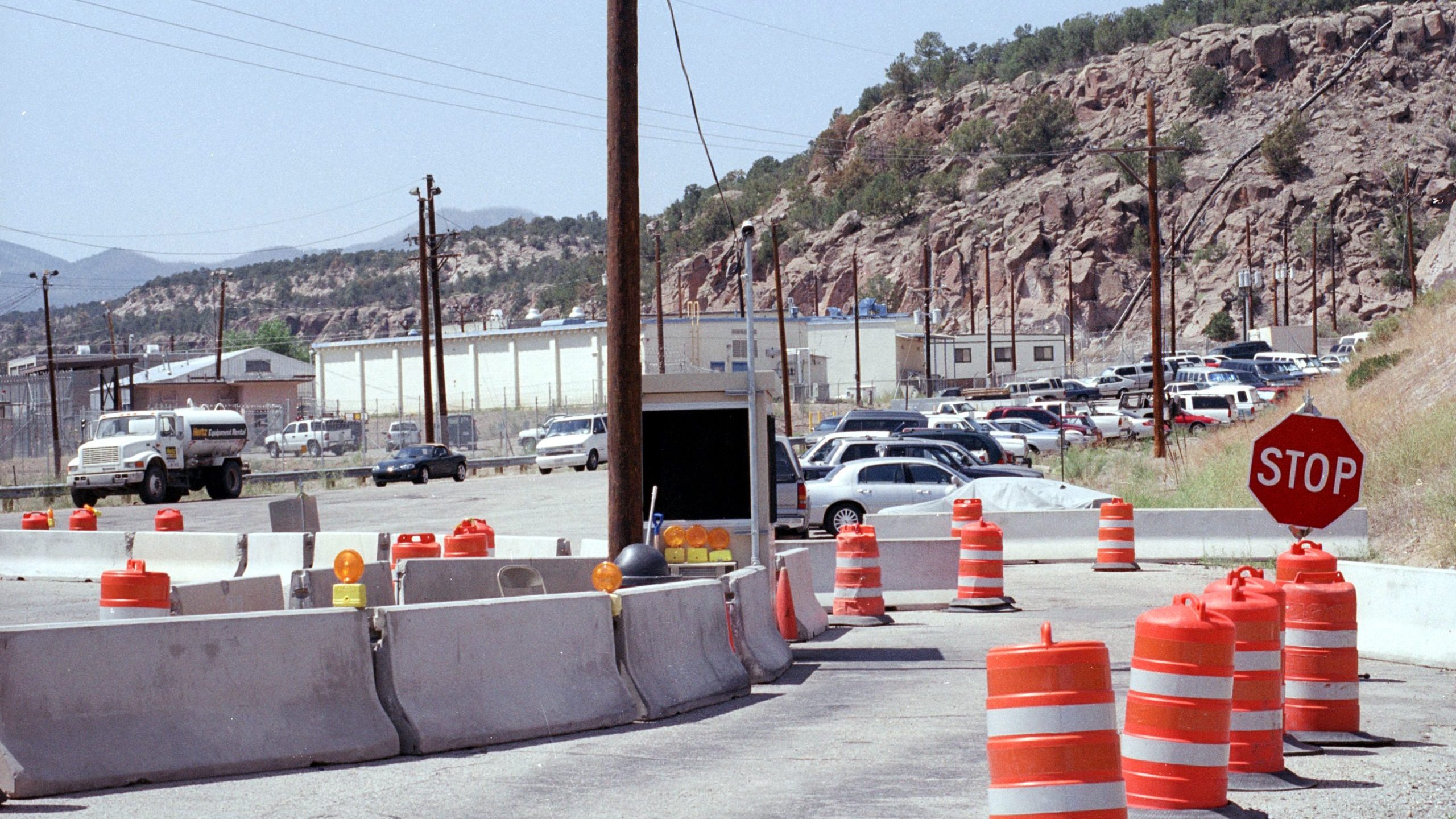
Although the parts of the site that still conduct research are highly secretive and tightly guarded, guided tours to the less sensitive areas are offered on a monthly basis. Visitors are prohibited from bringing cameras, phones or binoculars, and they are forbidden from taking rocks or anything else they might find as souvenirs.
The site is used used to train for terrorist attacks
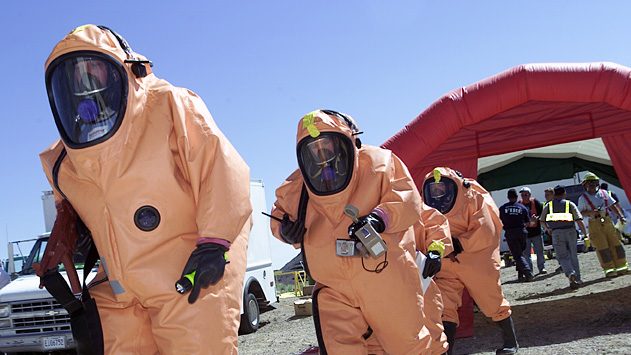
The United States military takes the threat of terrorists obtaining radioactive weaponry incredibly seriously, and it has dedicated an entire section of the Nevada Test Site to training for this eventuality. The Radiological/Nuclear WMD Incident Exercise Site is used to replicate a range of possible radiological terrorist attacks, allowing military personnel to develop response protocols.
The NTS was used to see how radiation affected plants
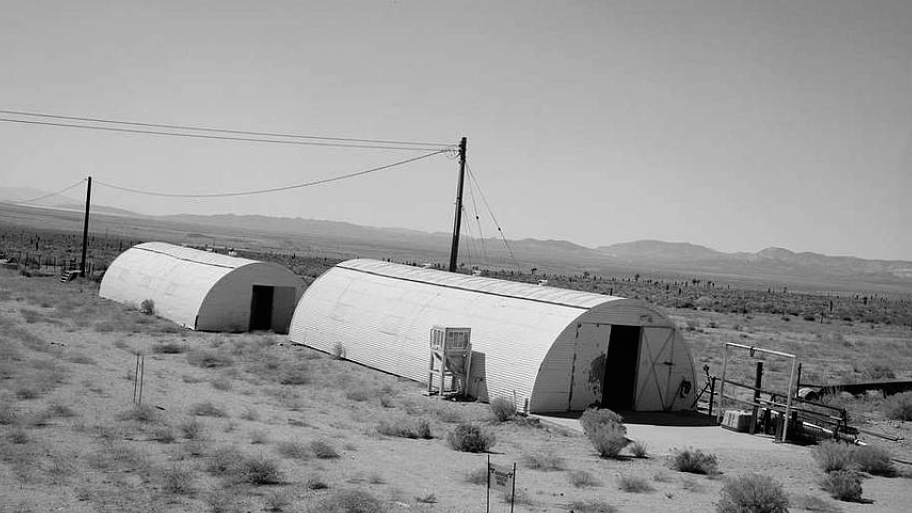
In 1962, American botanist Janice C. Beatley created 68 test sites around the NTS to study the effects of radiation on plants. The government’s decision the following year to abandon atmospheric testing meant that the sites were exposed to significantly less radiation than expected, however Beatley continued measuring changes until 1980. Much of the data has never been made public.
The first nuclear explosion occurred at a different US site
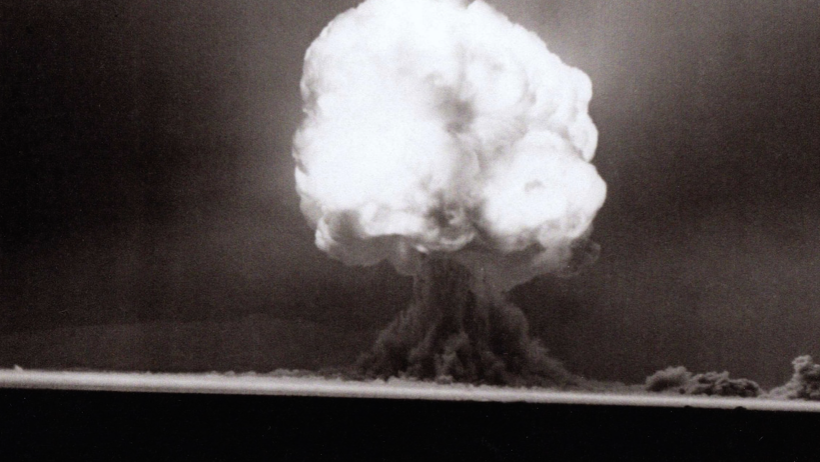
Although the Nevada Test Site became the most bombed place in American, the world’s first nuclear explosion took place on July 16th, 1945, at New Mexico’s Alamogordo Bombing Range. An 18.6 kiloton nuclear device was detonated atop a 100 foot tower at 5:30am, resulting in a shockwave that knocked observers off their feet and a blast that was visible from over 150 miles away.